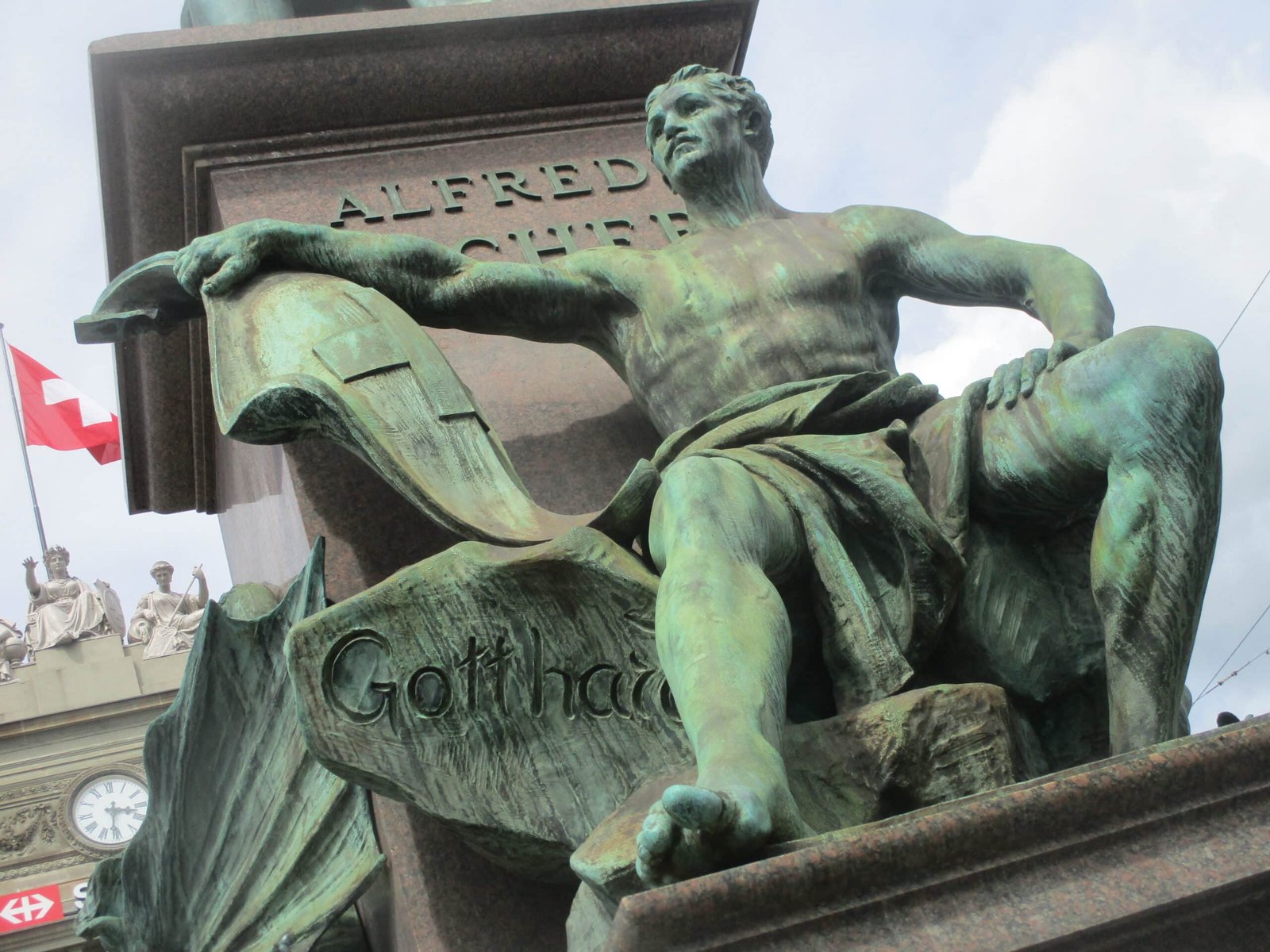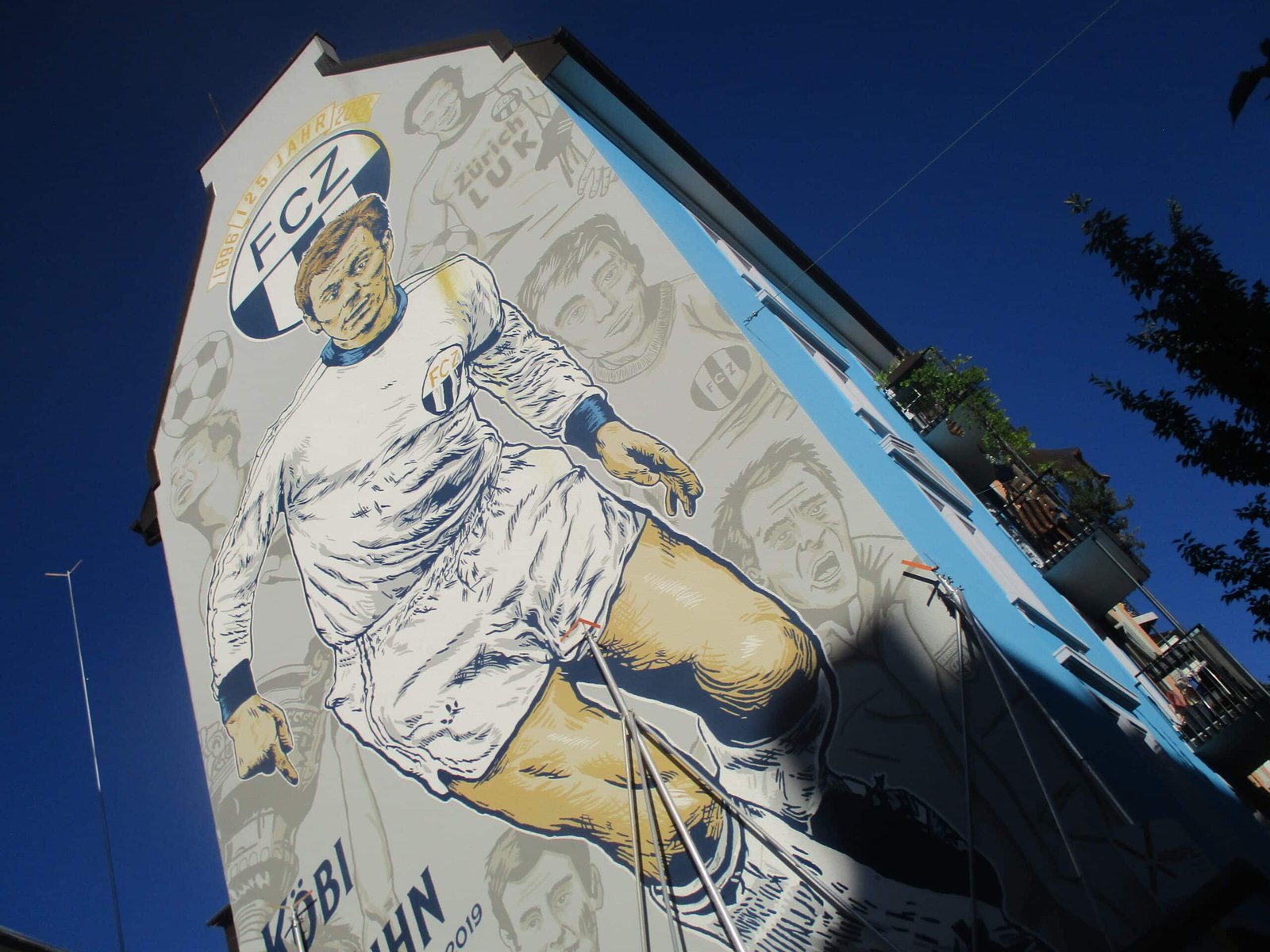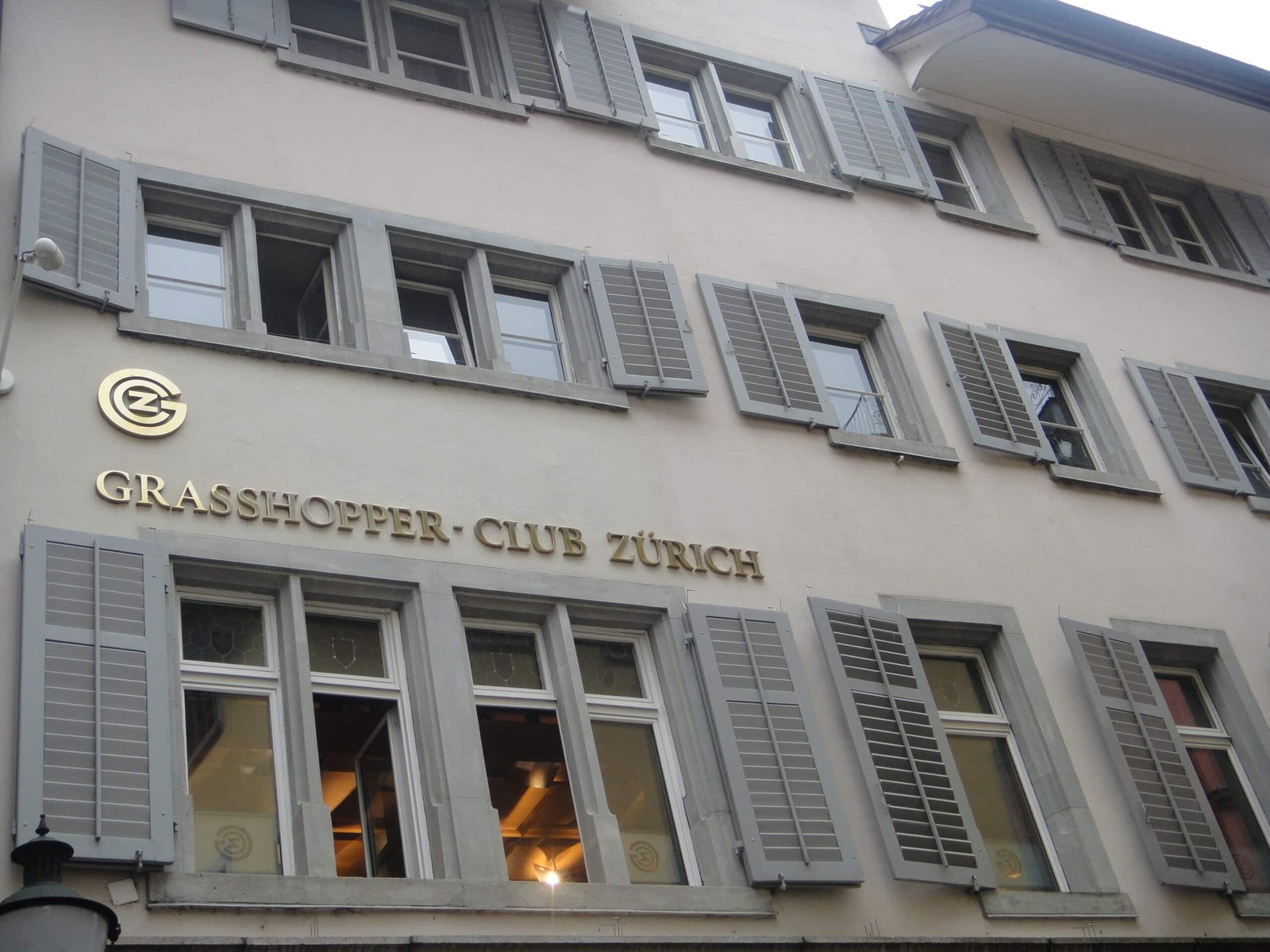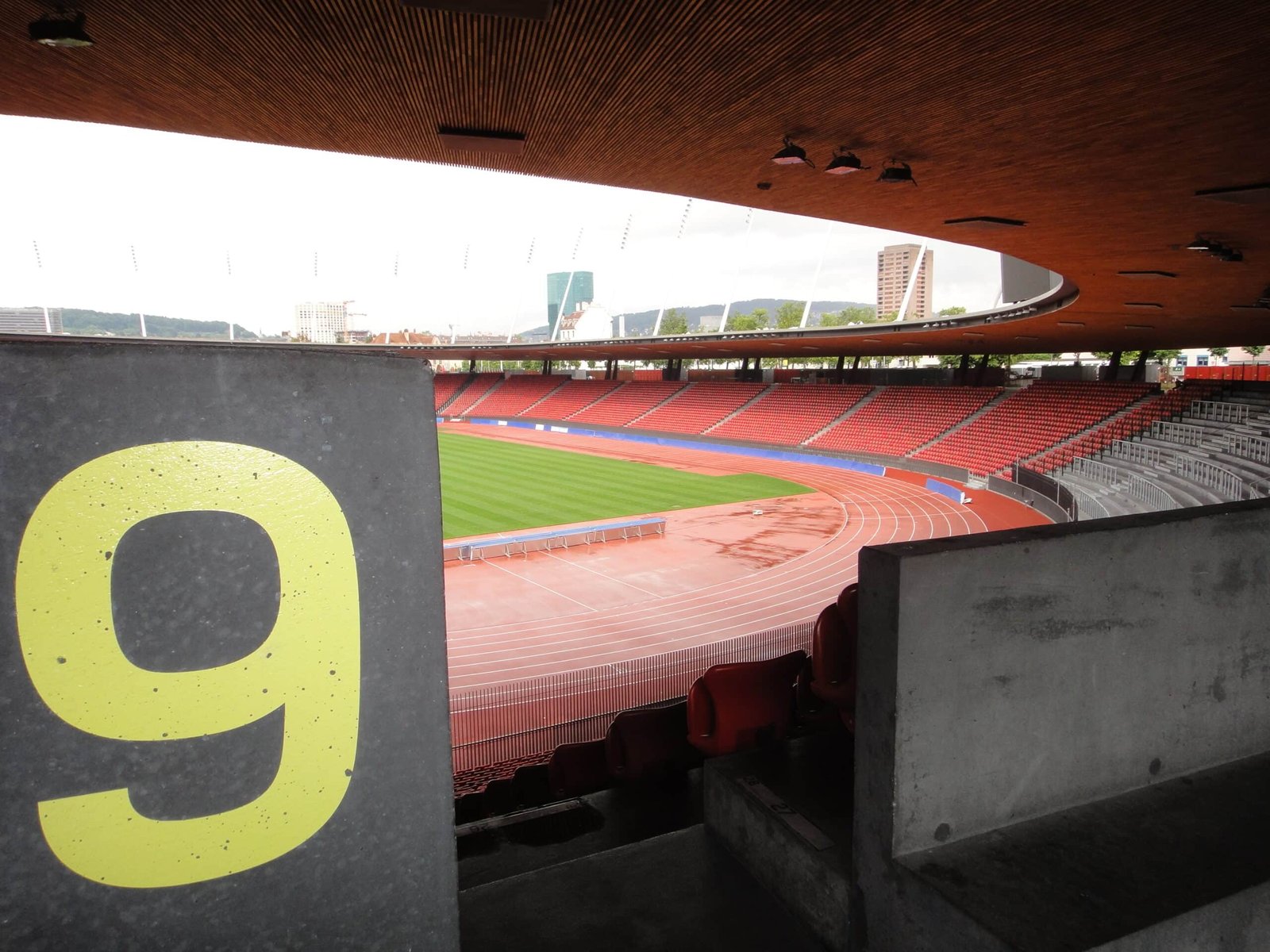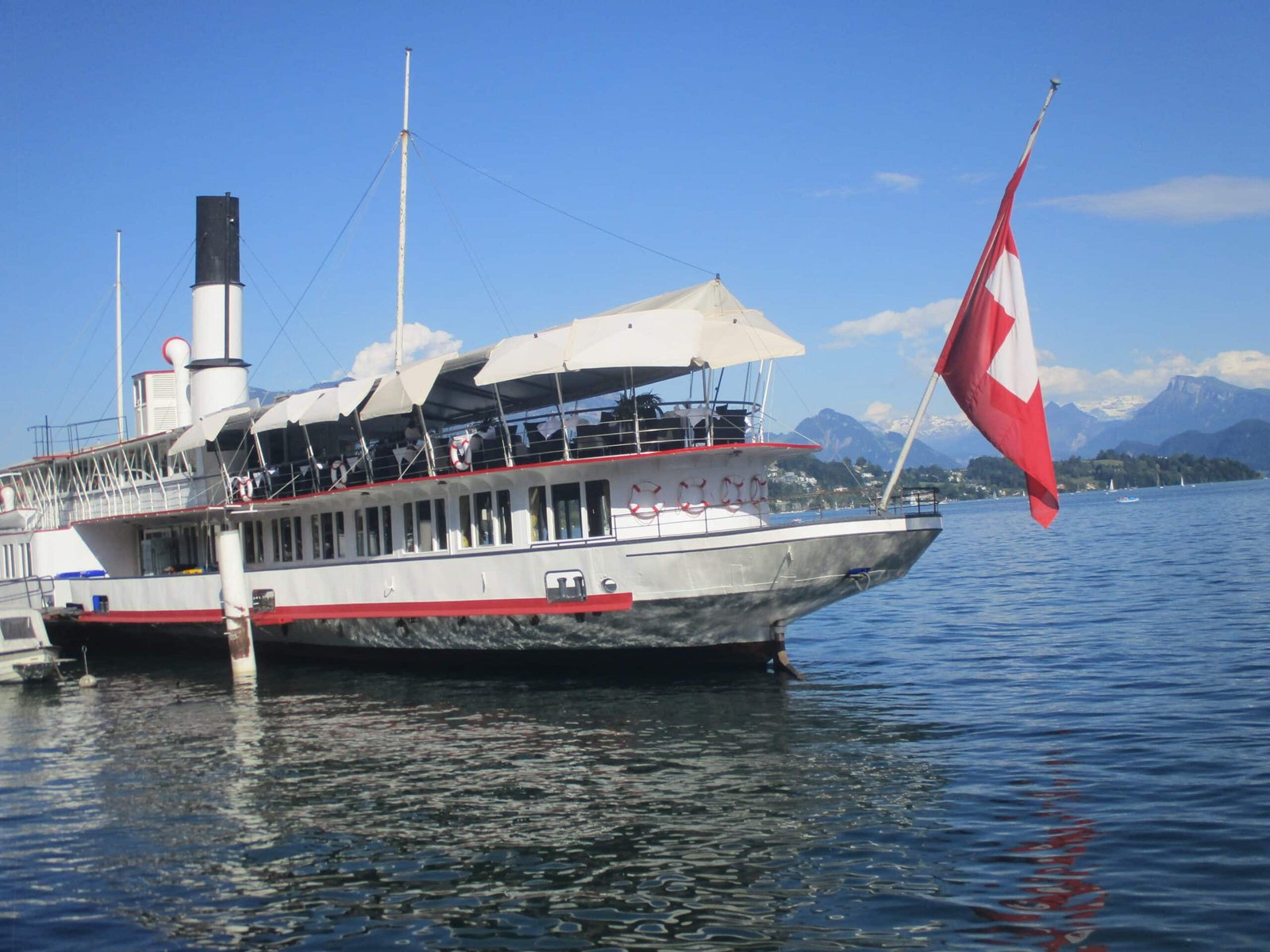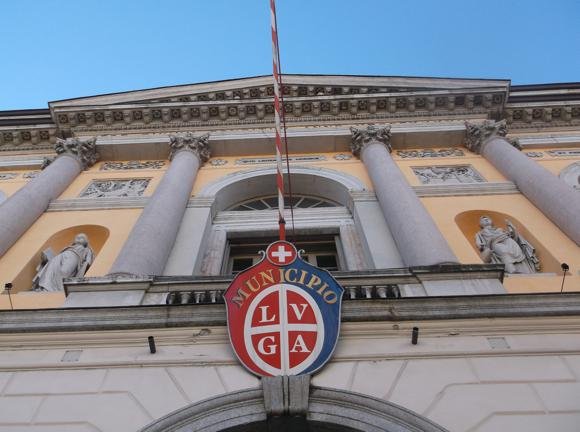Teams, tales and tips – a guide to the local game
Basel might think itself the hotbed of Swiss football culture but the league title has gone to the financial capital of Zürich almost twice as many times.
Switzerland’s largest city is the only one to host a long-running top-flight cross-town rivalry – between record champions Grasshoppers and the more recent winners, working-class FC Zürich (‘FCZ’ or ‘Eff-Tsay-Tszett’).
Both clubs currently share the Letzigrund, built by FCZ members in 1925. Shortly afterwards, Grasshoppers, referred to locally as Grasshopper or GCZ, moved into the nearby Hardturm. It later saw an absurd amount of goals – including a 9-0 and a 7-2– at the 1954 World Cup.
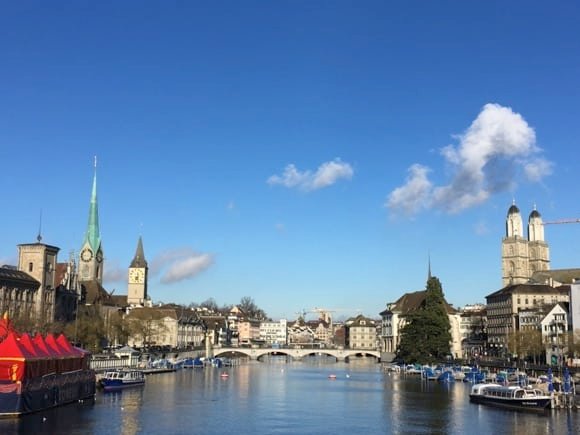
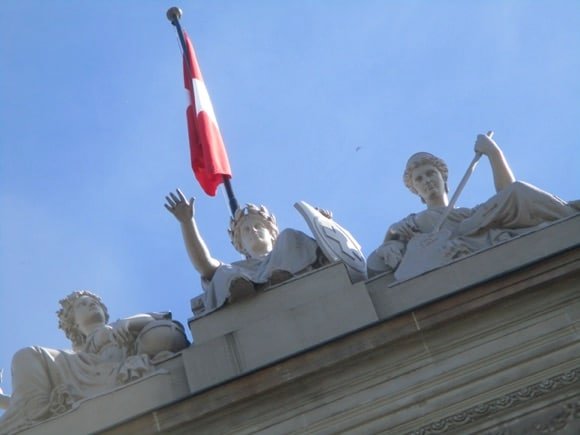
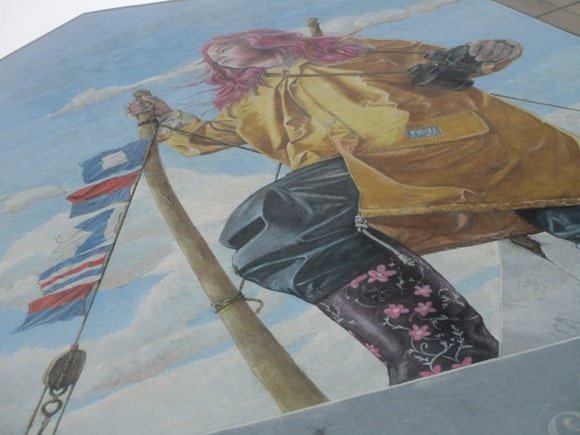

While you’ll struggle to find evidence around town of a club soon to celebrate its 140th anniversary, FCZ graffiti is everywhere, along with a mural of revered one-club legend Köbi Kuhn, a museum and well-stocked supporters’ shop.
Each won titles at the last turn of the century – in fact, the Swiss crown didn’t leave Zürich for its first five years.
Formed in 1886 by a student from England, Tom Griffith, and adopting the blue and white of Blackburn Rovers, Grasshoppers had already won 14 titles by the time the 1954 World Cup arrived.
City rivals FCZ were created a decade later, with Swiss roots. One of the founding members was Hans Gamper, born locally, who went on to set up FC Barcelona. A small street near the railway lines has been named after him in recent years, another successful initiative kick-started by pro-active FCZ supporters.
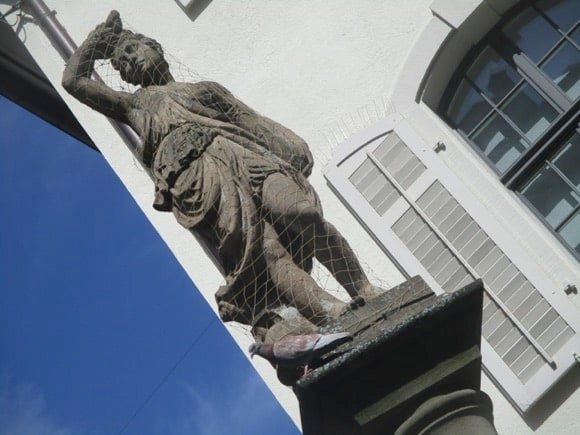
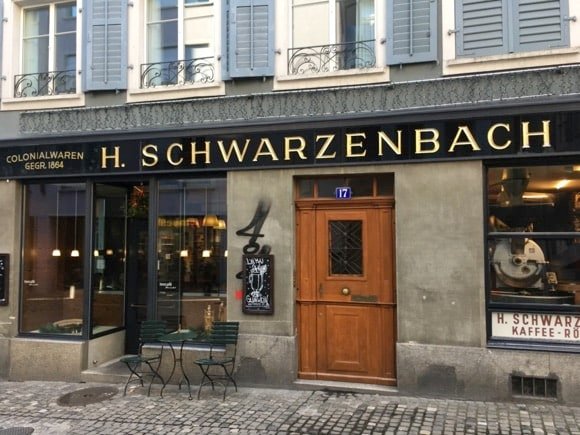
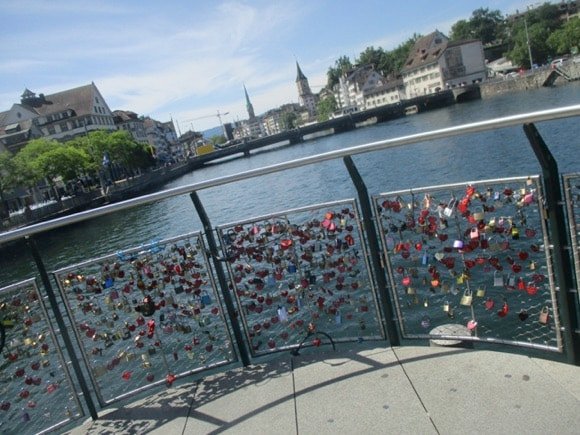
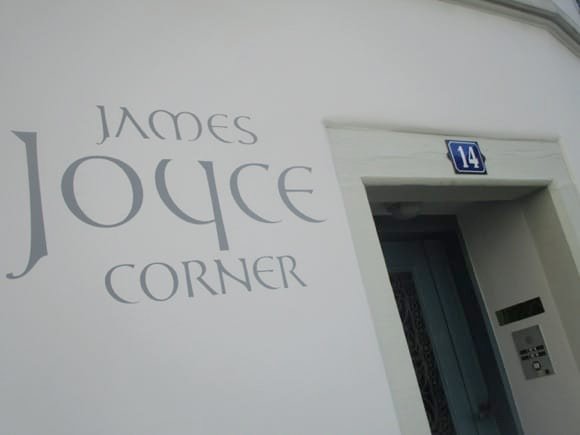
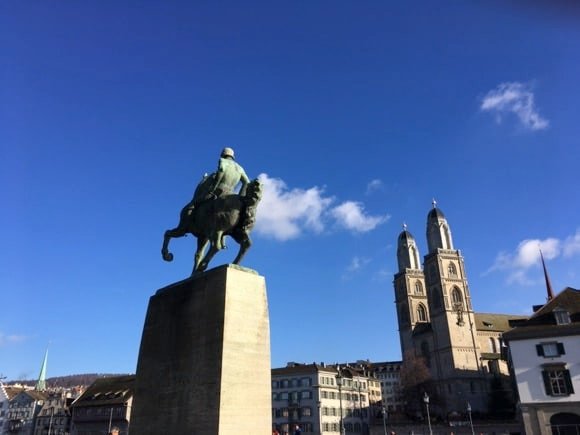
As Zürich was rapidly developing as a business and industrial centre, with a major railway station and stock exchange, it attracted a wave of foreign employees. Just as Grasshoppers have a British background, so the local team who won the Swiss title in its second year, was the Anglo-American Club Zürich. Little is known about them today, but the names of the 1899 title winners – Bachelor, Smith, Morris – aren’t exactly Swiss.
Also on the scene were Viktoria, who would become FCZ, Fortuna and, sadly long buzzed their last, Fire Flies Zürich.
The Zürich derby, therefore, is Grasshoppers against FCZ, who have enjoyed their own purple patches since their initial championship of 1902. For short periods of the 1960s, 1970s and 2000s, FCZ overshadowed their richer rivals, who were forced to leave the Hardturm for good in 2007.
By then, Zürich had long been the headquarters of football’s governing body, FIFA, which moved from Paris in 1932.
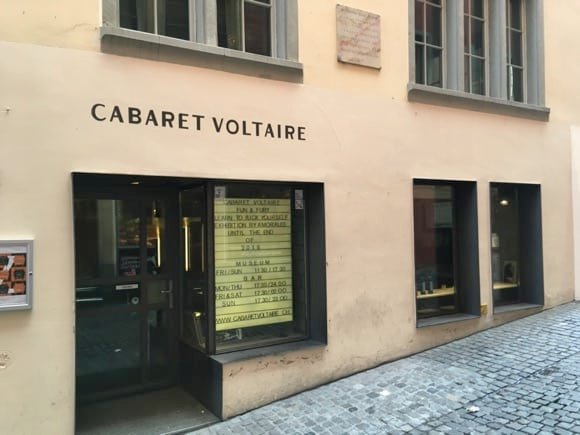
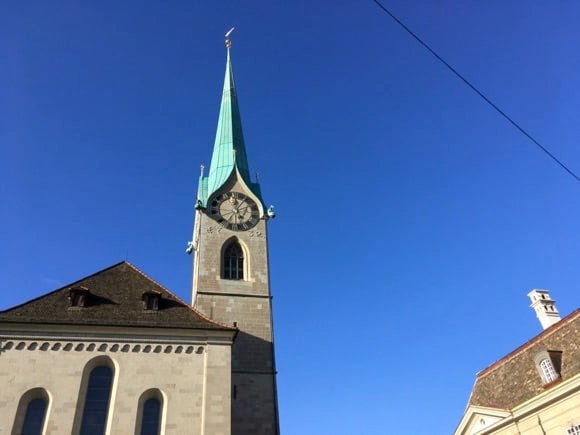
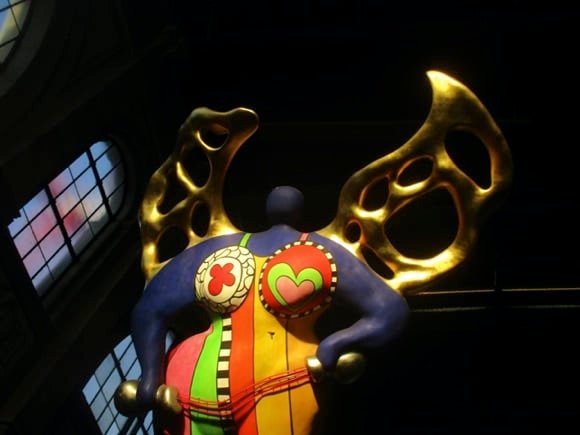
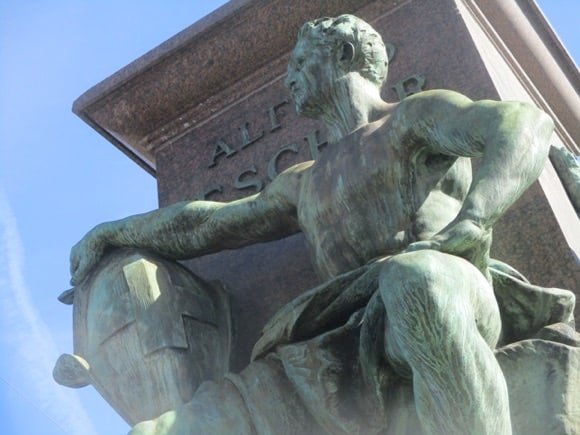
The following year, a rebuilt Letzigrund staged three games for Euro 2008 – this time with few goals – and became the shared home for Zürich’s two clubs.
This shared home, though, was to be the Stadion Zürich, built on the site of the demolished Hardturm – the original first choice, in fact, for the city’s Euro 2008 venue. In 2013, after years of legal hurdles, the proposed Stadion Zürich (aka Zürich West) was rejected by nearly 51% of local citizens in a referendum.
As it turned out, the Letzigrund would prove a popular stadium for both Switzerland’s men’s and women’s teams, and a key venue for the Women’s Euros of 2025, England scheduled to play two group games there and a possible semi-final. Capacity, capped at 22,700, was expected to be tested as the tournament began.
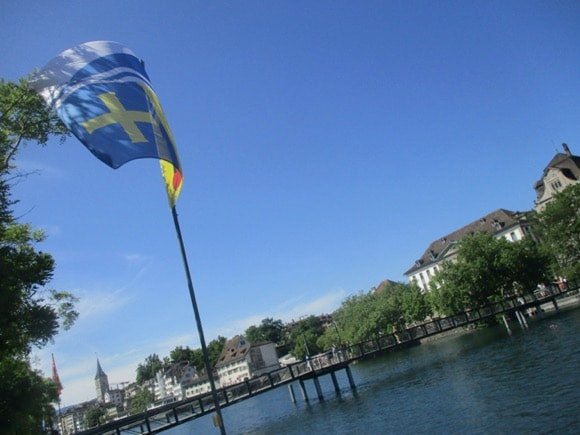
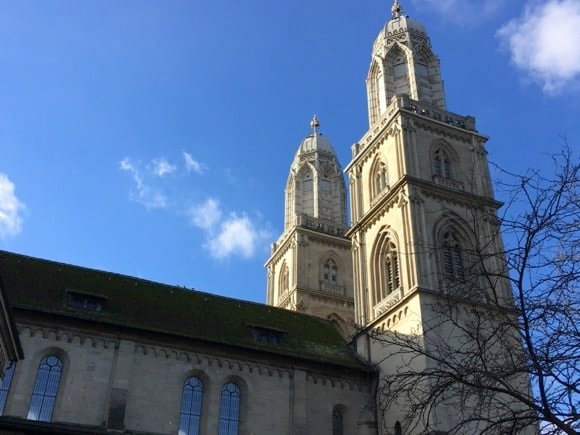

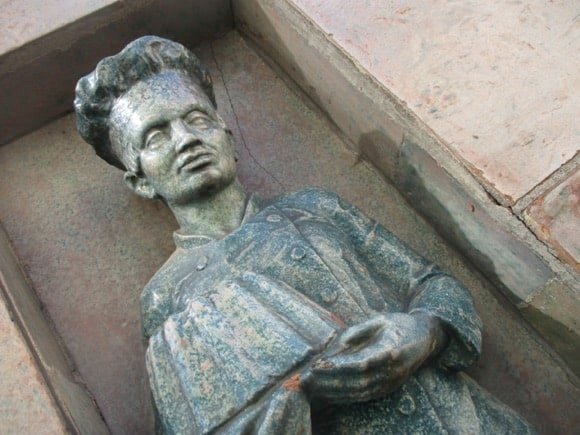
FIFA, meanwhile, remains in Zürich, despite the shocking arrests of top officials for corruption in 2015, with raids by the authorities on the luxury lakeside Baur au Lac hotel. Nearby, opened in 2016, the FIFA Museum is part of a mainly underground complex unveiled in 2007. See below What to see.
The scandal came in the wake of the disastrous performance of the 90% self-financed feature United Passions, partly filmed in Switzerland, considered by many to be the worst movie ever made, and certainly one of the worst-performing at the box office. Zürich was also the setting for the controversial announcement in 2010 of Russia and Qatar as World Cup hosts in 2018 and 2022.
On the plus side, close to the Letzigrund, on the same main Badenerstraße leading west from the city centre, Retro Shirts stocks rare and original vintage tops from around the world. Opened in March 2025, it attracts fans heading to or from the stadium two tram stops away. See below Where to shop.
Getting Around
Arriving in town and local transport

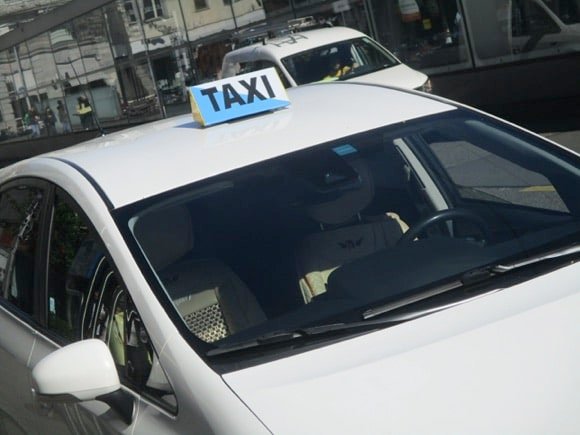
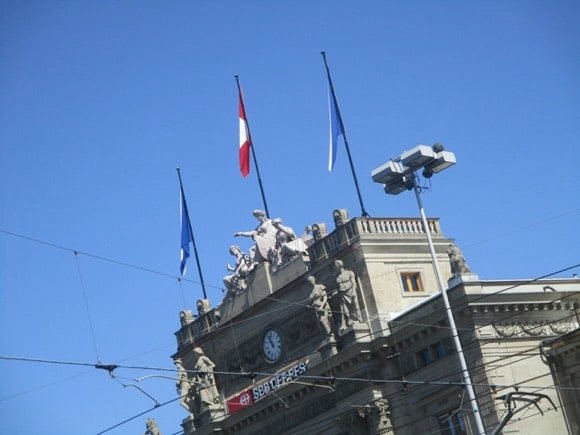
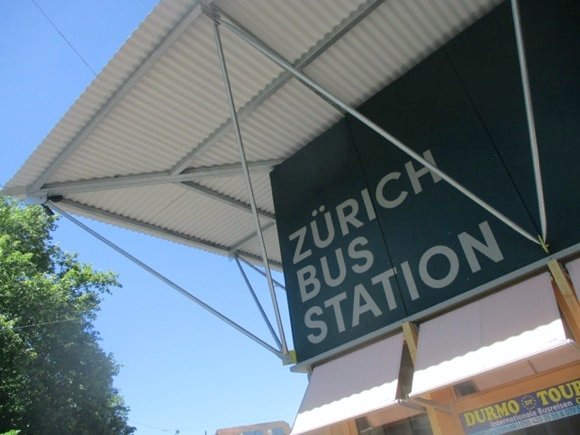

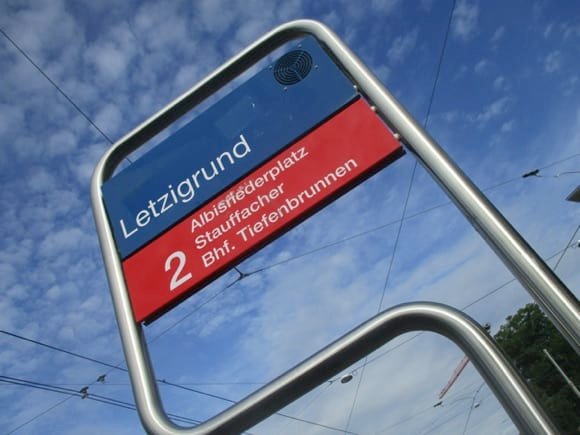
Zürich’s airport is at Kloten, 13km (eight miles) north of town, linked by regular national rail services and S-Bahn trains (both SF7 one way with 1hr onward transport, see also below 24hr passes) to the main station and beyond to elsewhere in Switzerland.
Taxi Zürich (+41 782 306 074) should charge about SF70 into town.
City transport run by ZVV consists of trams, buses and S-Bahn lines. A single is SF2.80/30mins, SF4.60/1hr, within zones 1-2. The airport is in zone 3.
A 24hr pass is SF9.20 or SF14 including zone 3, ie the airport.
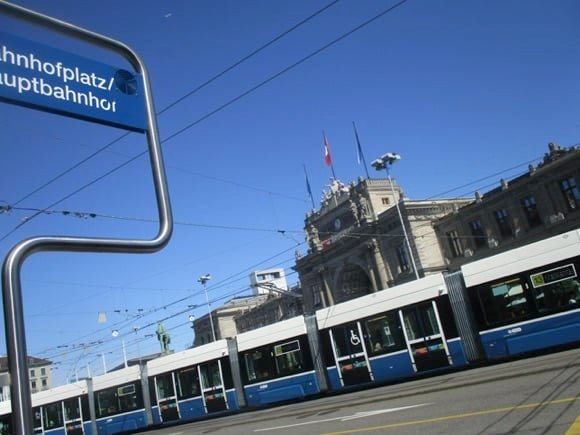
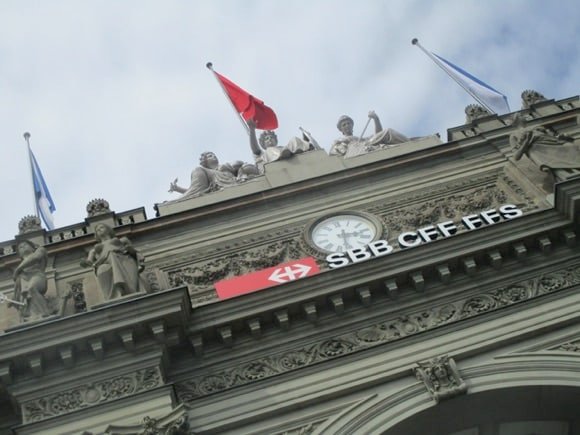
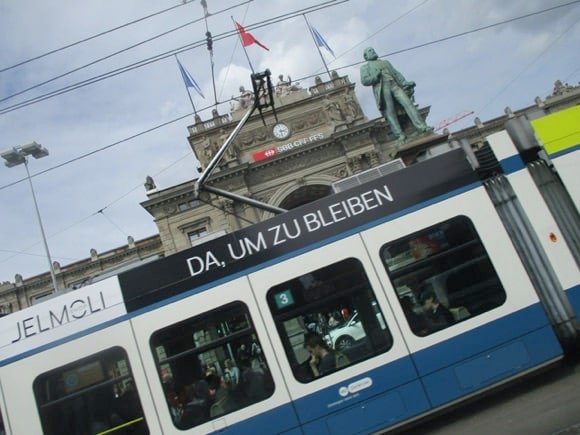
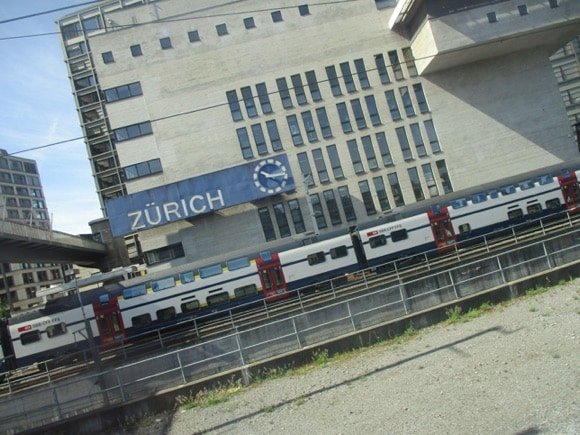
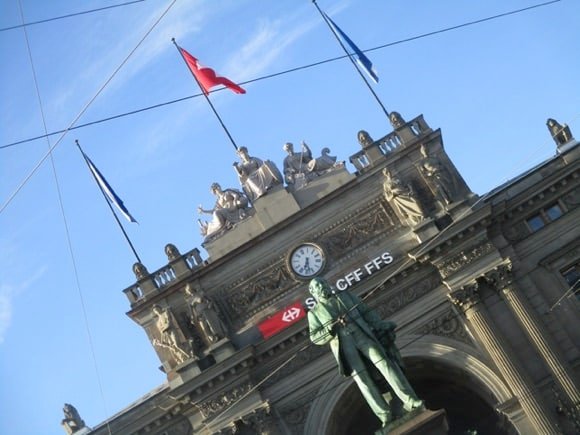
Tickets are available at machines by most stops. You can also download the ZVV app in either format.
Zürich Hauptbahnhof (main station) is close to the city centre. The Letzigrund is a short, easy tram ride west of town.
If you’re in Zürich for the Women’s Euros 2025, your match ticket is valid on all travel across Switzerland, national rail and city transport, from midnight before the game then up to 5am the following day.
Where to Drink
The best pubs and bars for football fans
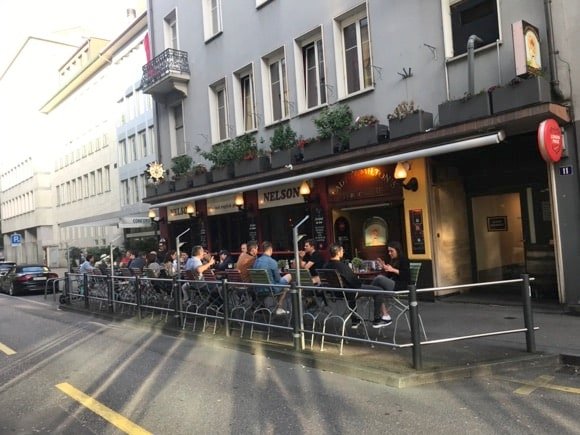
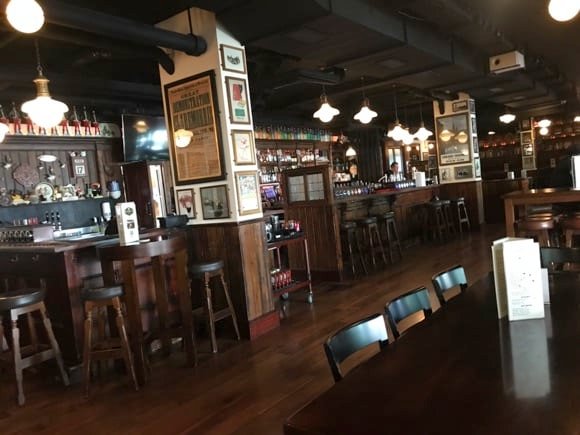
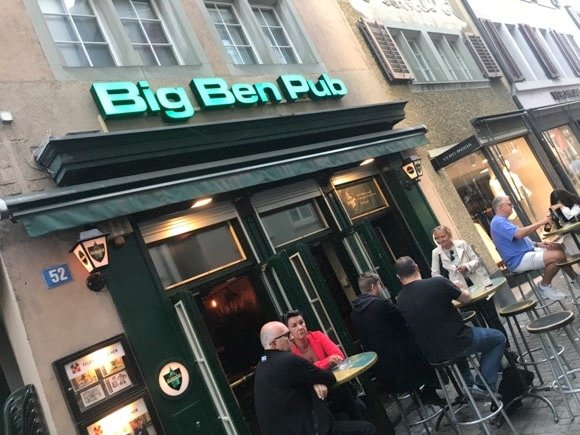

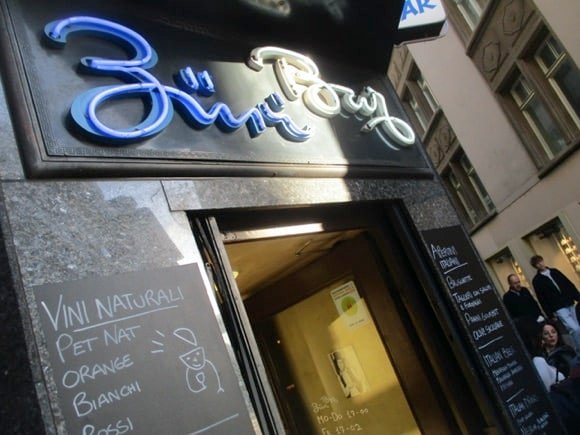
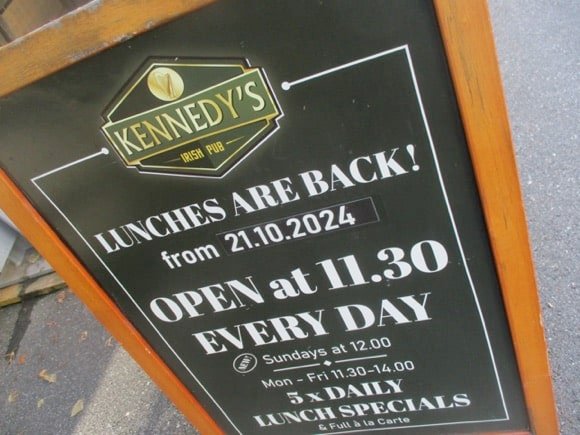
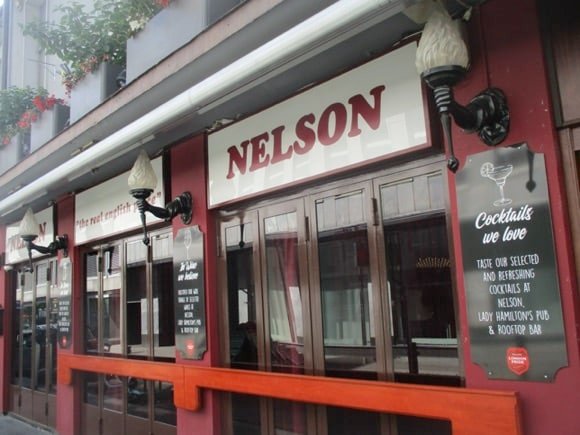
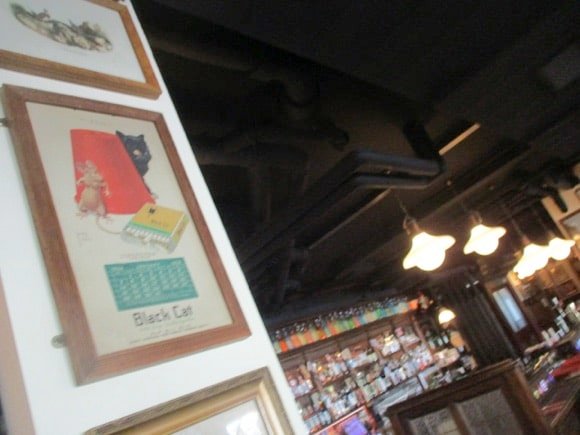
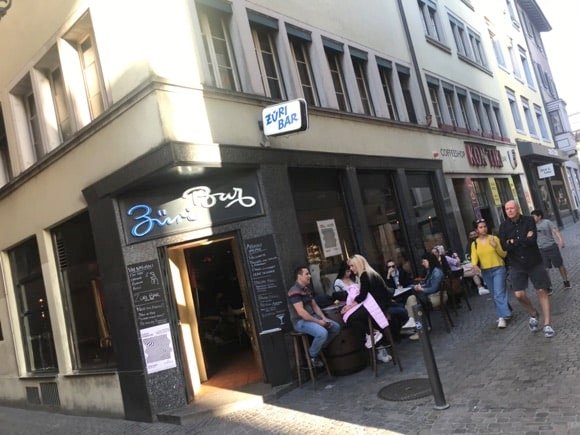
Zürich is where strong Hürlimann beer came from, before being taken over by Carlsberg – but you’ll still see plenty of it around the age-old bar hub of Niederdorfstraße, tucked in behind the Limmat embankment on the other side of Bahnhofbrücke from the station.
There, the Züri Bar (No.24) has been a real cult/locals’ spot since 1947, though it’s lost its touches of FCZ iconography. Now more Italian in approach, it offers high-quality aperitivi from opening time at 5pm (not Sun), on an atmospheric, cobbled-street corner.
It links through to the first tiki bar in Europe, Kon-Tiki (‘since 1955’), with party fun and entertainment until 2am at weekends, midnight the rest of the week including Sundays.
On the same street back towards Bahnhofbrücke, Big Ben is more bar than pub, more celtic-oriented than London-themed, and goes big on rarer ales. TV football on a big screen, too.
Of the expat pubs elsewhere, nearer the station, Nelson on Beatengasse is an old-school tavern which keeps the party going until with DJs and opening hours until 4.30am at weekends. Plentiful screens for sport, too, and a popular terrace.
The other side of the station, near the FCZ shop/museum, long-established Kennedy’s keeps similar hours, its kitchen open until 10pm. Plenty of TVs for sport, too – don’t be put off by the scaffolding around it during the Euros, the terrace is open for business.
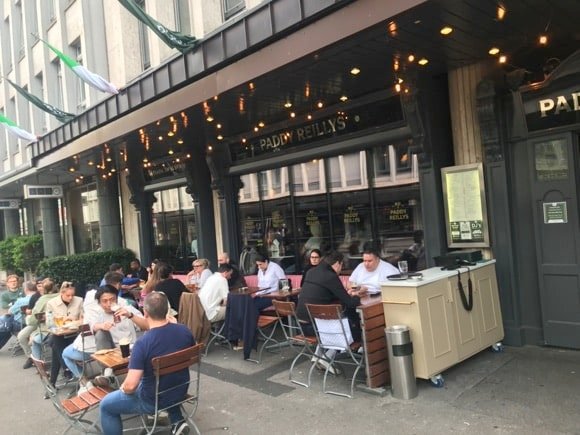
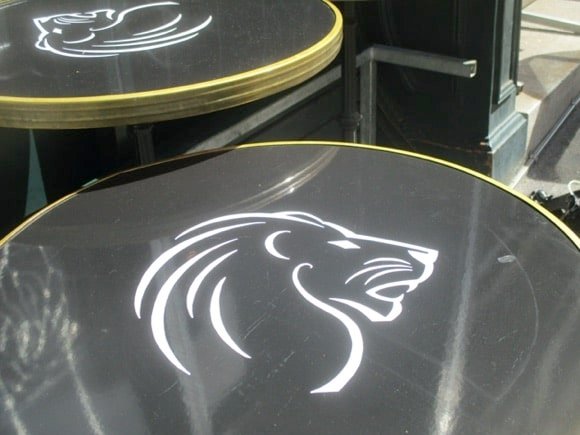
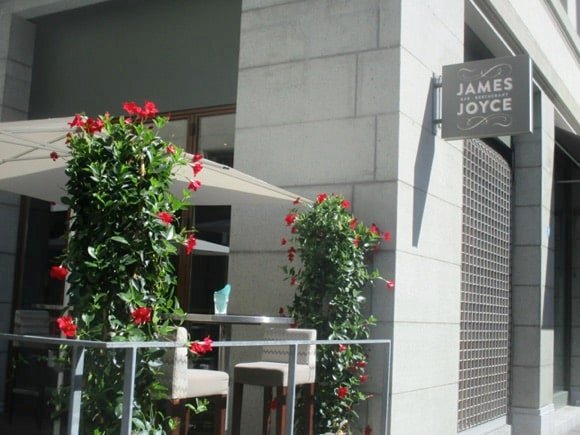
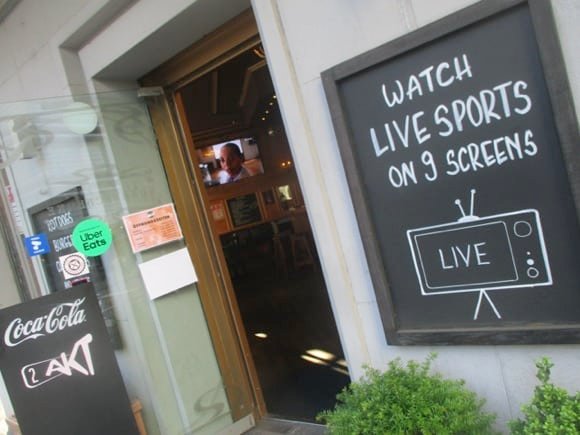

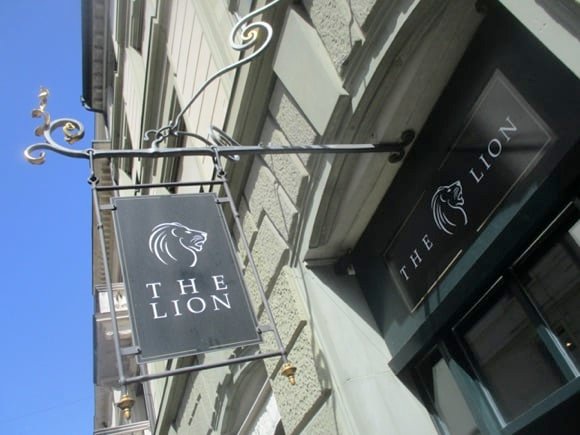
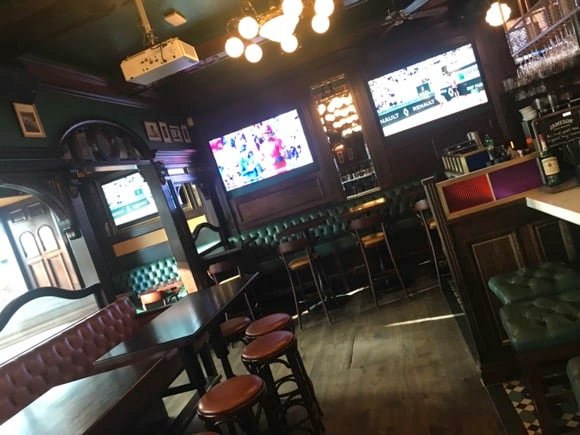
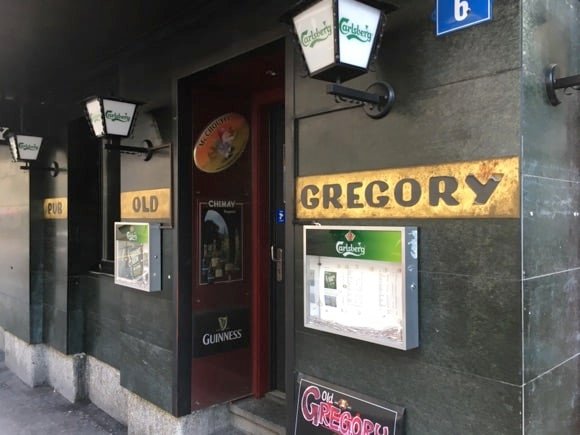
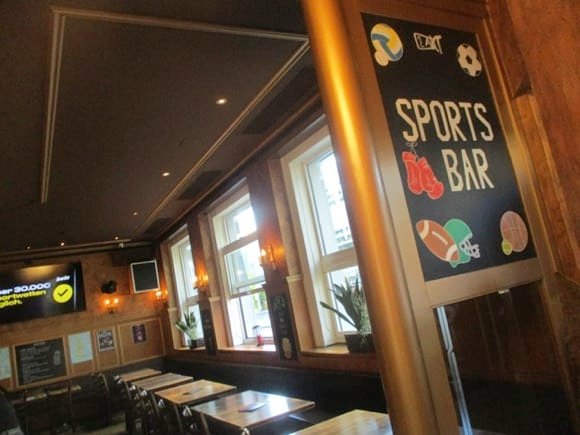
Another prime spot, Irish-owned Paddy Reilly’s has enough screens to fill out a comprehensive TV schedule posted on its website, two tasty mains featured as weekly specials Mon-Fri, its own-label amber, blanche and pale ale on tap, and DJs at weekends. Its popular large terrace sits alongside the Sihlstraße tram stop also serving the Letzigrund.
Just off Bahnhofstraße, The Lion is more refined and restaurant-like – but still has TV sports, while the James Joyce echoes its opulent surroundings opposite Cartier with a wine cellar and superior cuisine. Further towards the Letzigrund, the Old Gregory Pub goes big on late-night karaoke at weekends, but doesn’t forget sport, either.
To watch the game with a more local crowd, 2.Akt on Selnaustraße has been screening matches, serving affordable bar food and beer since 1992.
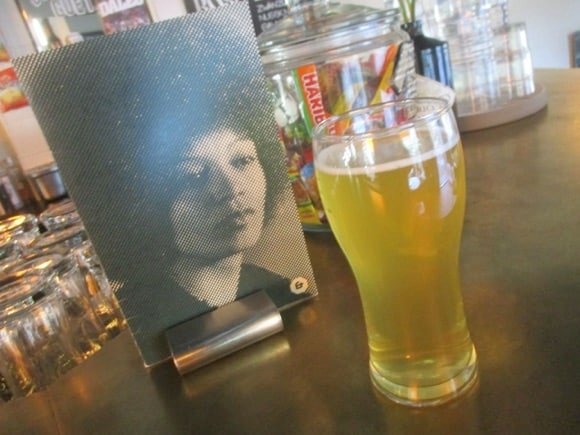
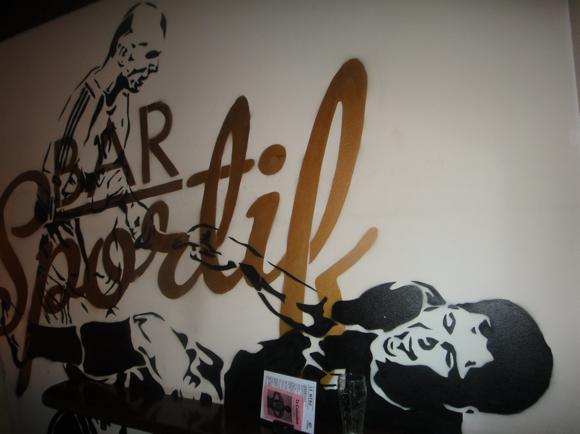
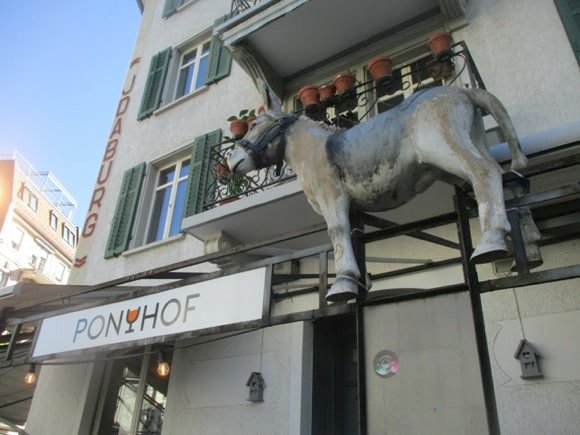
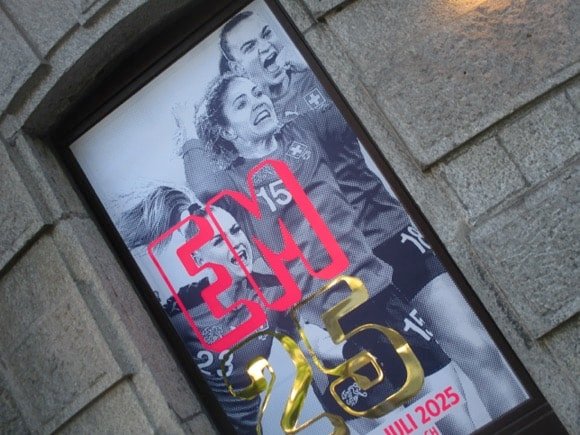
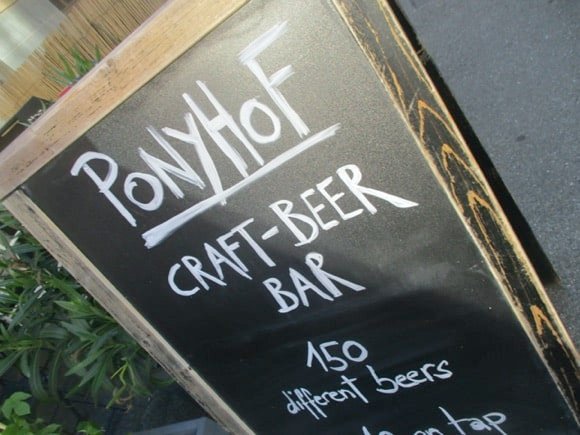
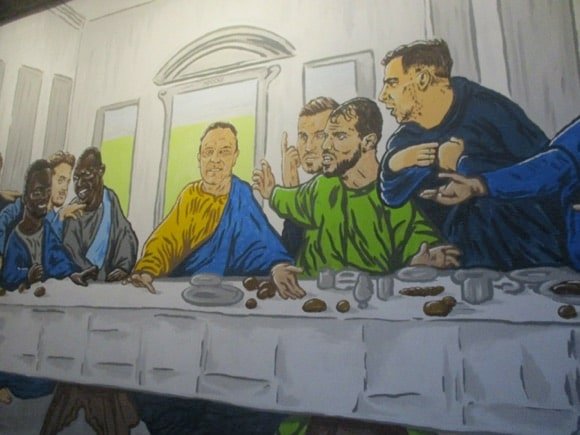
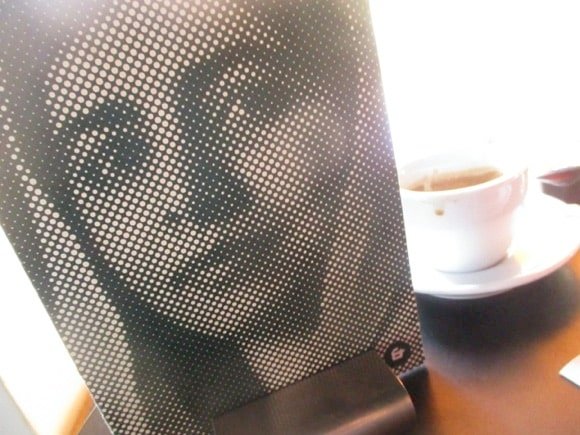

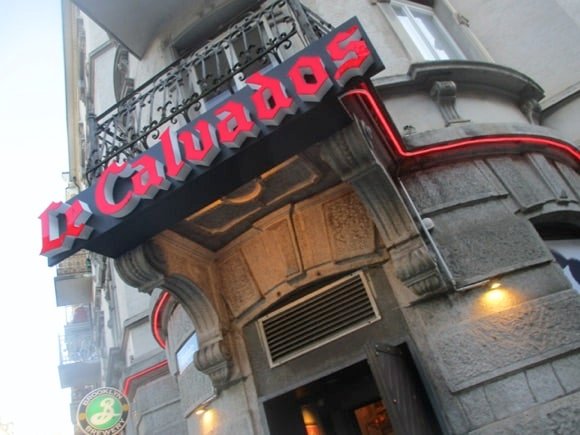
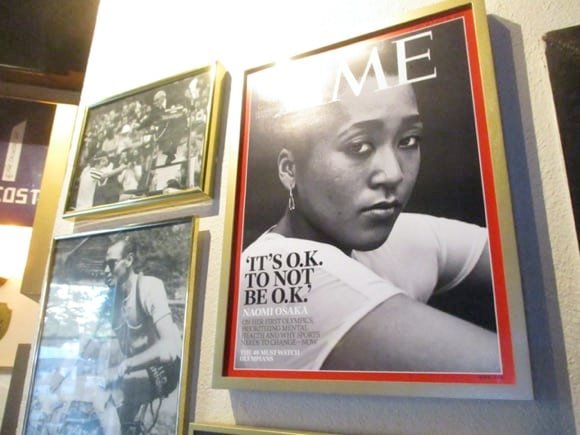
Those who remember the wonderful cult football Kaiser Franz – a meeting place for the staff of equally cool Swiss football magazine Zwölf – will be pleased to hear that its Italo-Swiss owner, Rudi, has recovered fro m its closure by opening craft-beer spot Ponyhof on Gertrudstraße in 2024.
Open from 5pm, 3pm at weekends (and closed Mon), it anchors a corner of the burgeoning bohemian quarter known locally as Idaburg, providing a convivial terrace to generate a late-afternoon buzz. The provision of screened football is currently being assessed. Nearby, on the next corner down, Enfant Terrible celebrates heroic women and alluring rebels, and shows games.
The excellent Le Calvados, a self-styled bar sportif, has been ahead of the game for well over a decade. Tastefully done out with retro touches, it appeals to a wide-ranging crowd who may be in thrall to the beautiful game or just love its fashion – note the must-have tees and flip-flops.
Located on Idaplatz, and opening from mid-afternoon, Le Calvados has a full menu – and a busy terrace filling this little square most nights of the week. TV coverage is a given. Ask nicely, and the staff will point you in the direction of the huge Köbi Kuhn mural round the corner.
Where to stay
The best hotels for the stadium and city centre
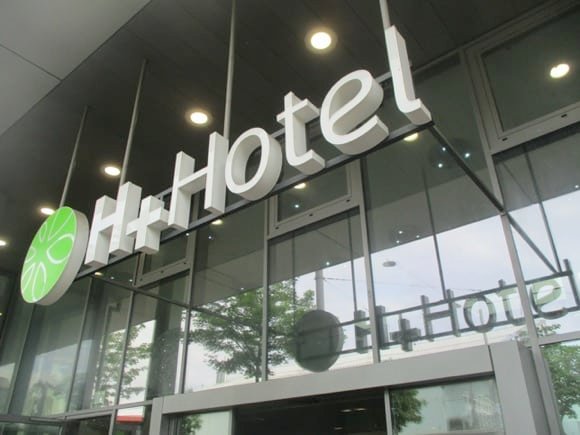
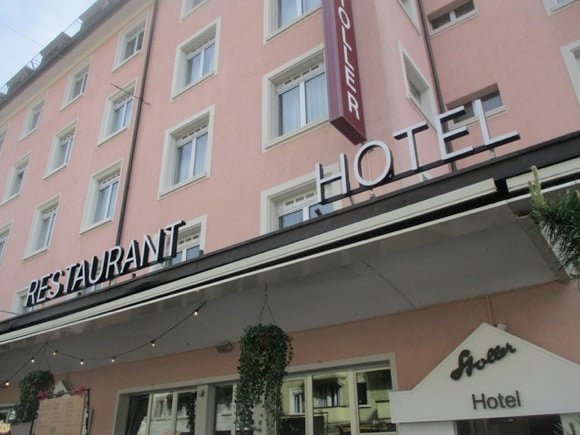
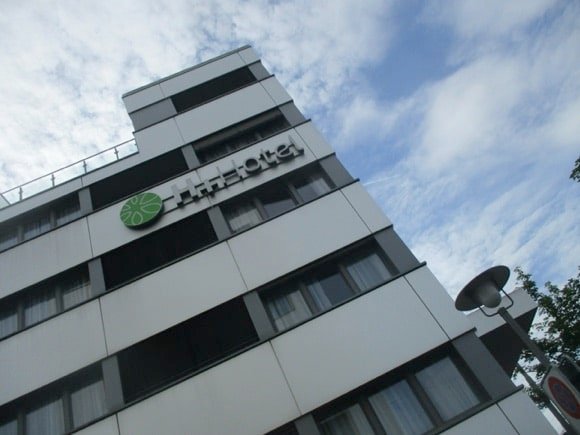
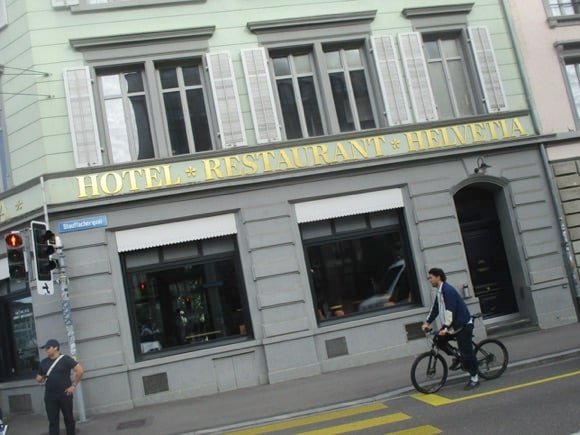
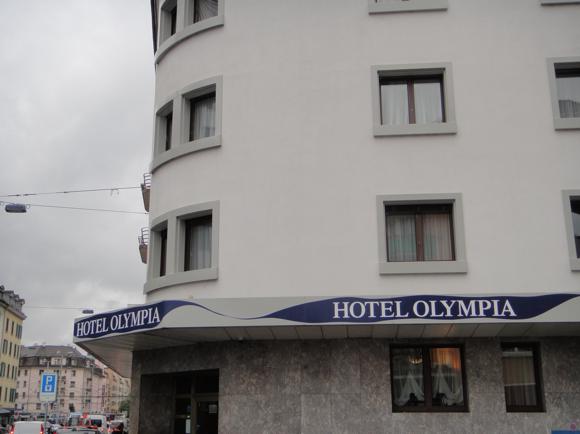
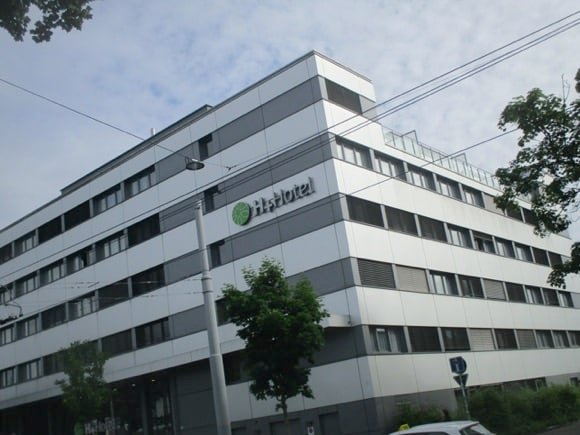
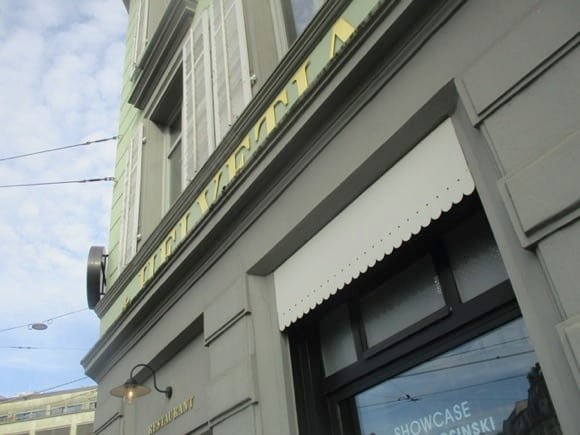
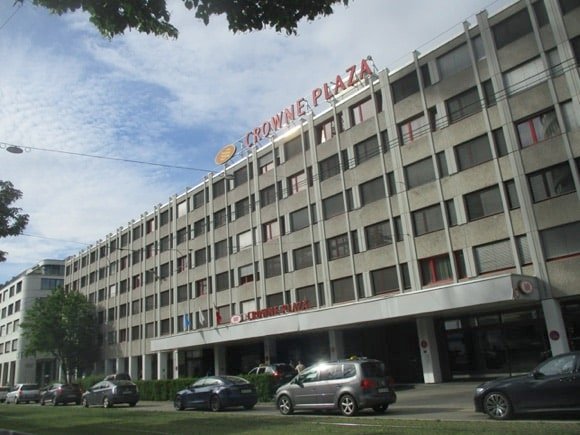
The Zürich Tourist Office has a free hotel-booking service online or by phone (+41 44 215 40 00).
Contrary to certain sources, the H+ Hotel Zürich facing the Letzigrund is not closed, but is still offering business-friendly lodging with a gym and sauna. Also on main Badenerstraße nearer to town, the sleek four-star Crowne Plaza Zurich has a heated indoor pool and two restaurants at lobby level.
Across the street, the terrace café/restaurant at the four-star Stoller doubles up as a pre-match favourite – kids will love the ice cream, served to Italian standards since 1938. The hotel adds the kind of touches which reflect three generations of family ownership.
By Albisriederplatz, one tram stop from the Letzigrund, the old-school but comfortable Hotel Olympia has 24-hour reception and paid-for parking.
Still on the number 2 tram route, where Badenerstraße meets the Sihl, the 34-room Helvetia hides a bright, boutique hotel behind a sturdy, traditional corner exterior.
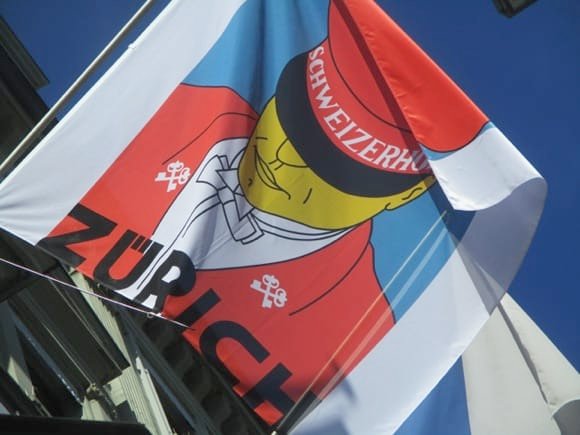
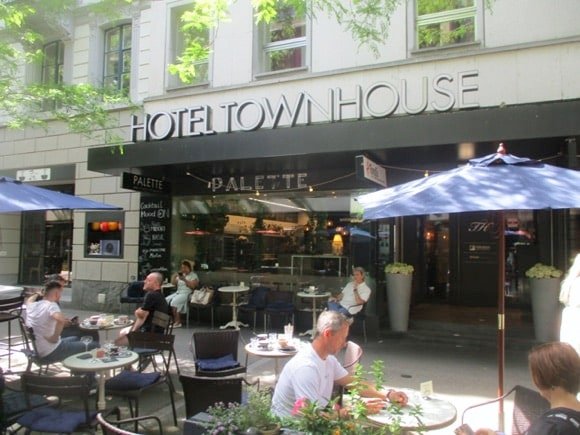

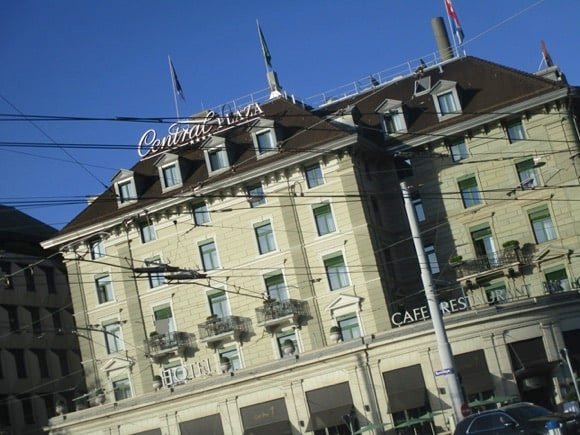
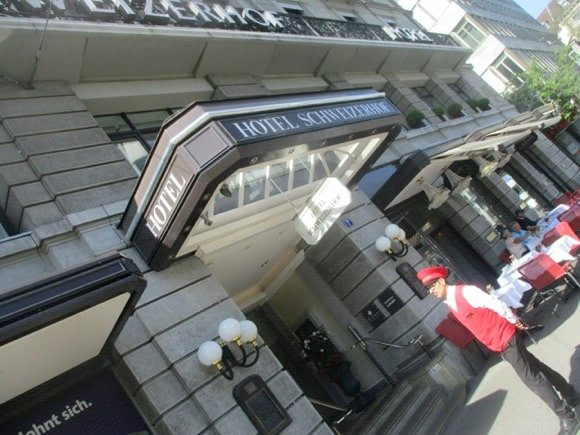

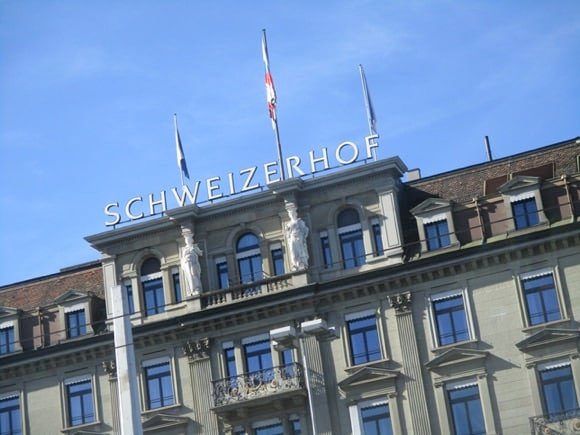
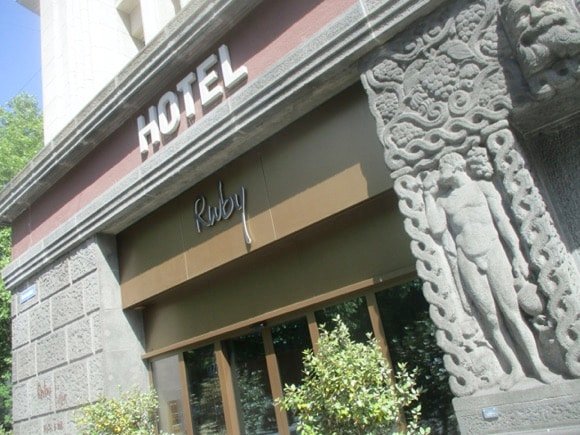

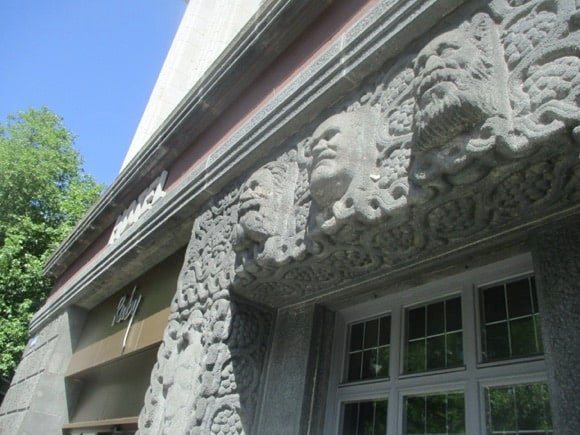
Around the station, the St Gotthard is a good-standard, renovated four-star dating back to 1888 while the Schweizerhof combines the tradition of a classic railway hotel with contemporary features. Guests gain access to the high-spec Holmes Place fitness centre nearby but are also greeted by a liveried flunky upon arrival.
Just behind, the Ruby Mimi plays up its filmic credentials by displaying vintage decor and furnishings in what was once Zürich’s first cinemas. Even if the immaculate rooms (categorised as ‘Wow’, ‘Loft’, ‘Star’, and so on) are beyond your budget, do pay a visit to the atmospheric bar.
Round the corner on Schützengasse, the upper mid-range Townhouse exudes comfort, its sunny front terrace buzzing from breakfast onwards.
Integral to the Zürich cityscape, the Central Plaza has been catering to railway travellers for nearly a century and a half. Benefits of direct booking include early check-in and 2pm check-out – handy for those heading from or to the station next door.
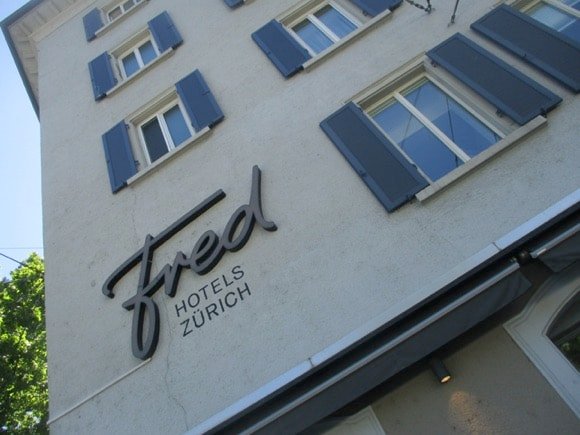
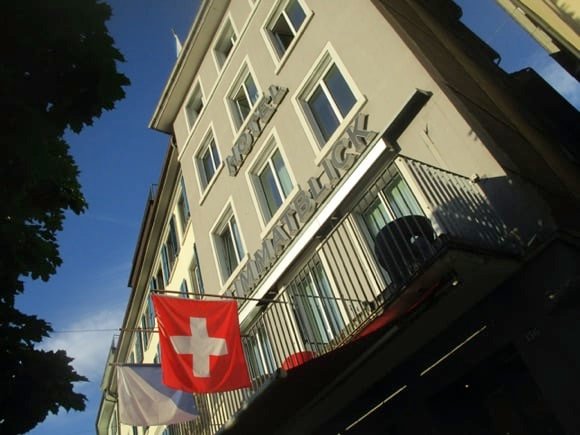
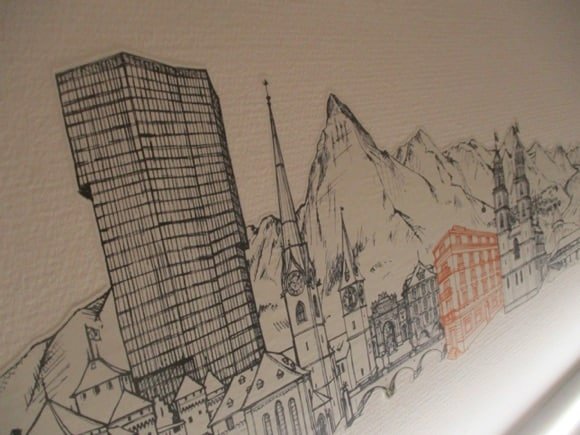
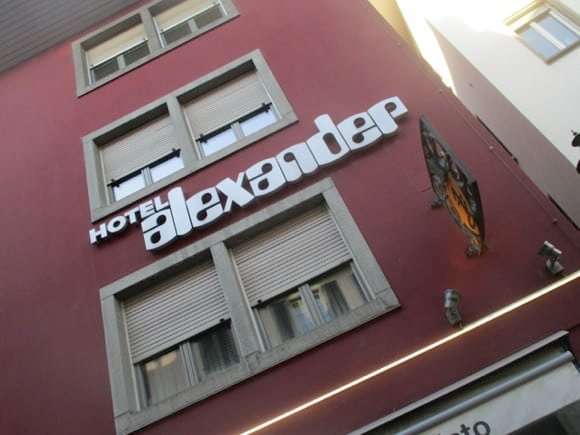
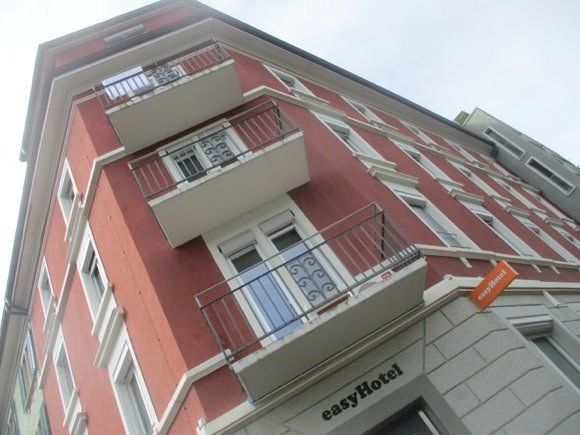
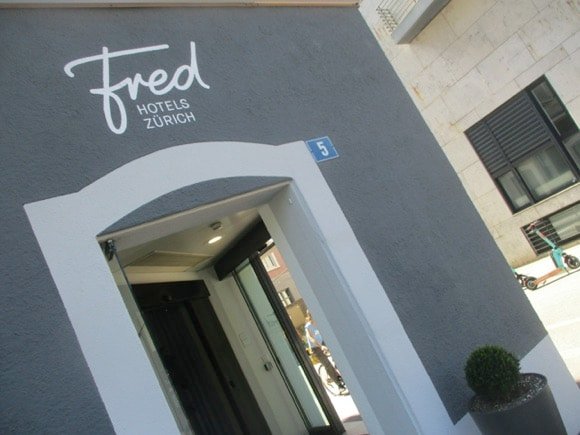
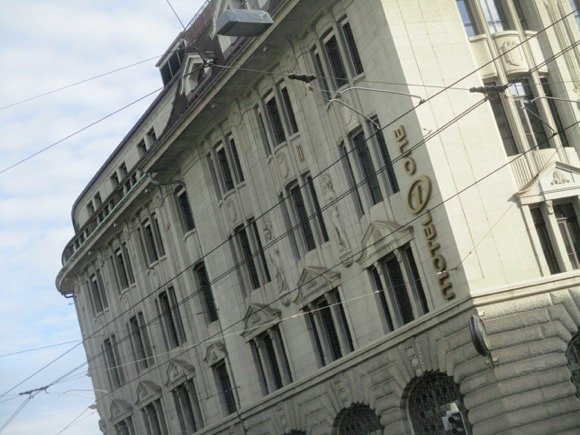
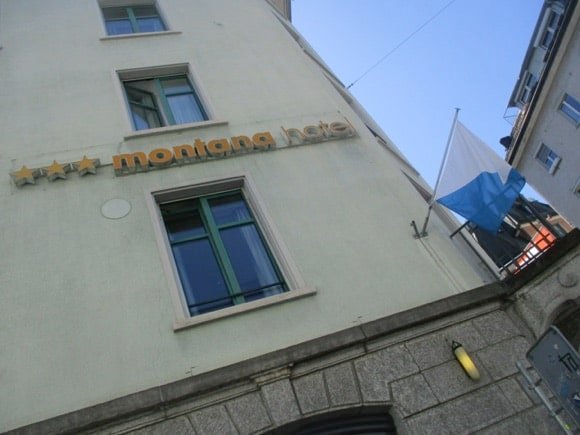
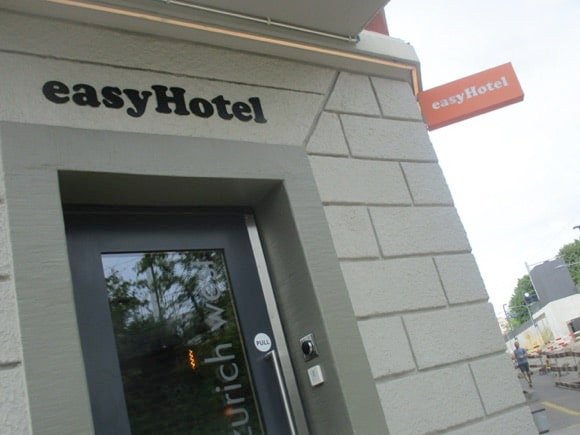
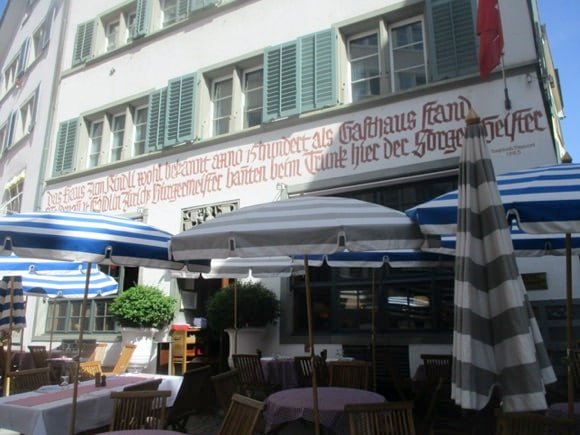
Also close to the station, on LImmatstraße, Fred is the flagship lodging of a local mini-chain, renovated in 2023 and very comfortable with it. There’s a 10% discount for early direct booking. Close by on Konradstraße, the three-star Montana marries style with convenience, plus a winning breakfast.
Back across the Limmat, blending in with the many terraces overlooking the water, the three-star Limmatblick is often booked solid but plan ahead and you should be rewarded with a prime spot, affordable in Zürich terms.
Just behind on bar-lined Niederdorfstraße, the Alexander is similar in price and offer, with appropriately soundproofed rooms and free entry to certain city attractions. Deeper into the historic quarter, the Kindli on Pfalzgasse has been an inn since the 1400s and feels unique – look out for weekend offers online.
The Zürich branch of the Europe-wide Motel One chain on Stockerstraße combines high design with urban convenience, dotted with the company’s signature turquoise touches.
Of the easyHotels in town, Zürich West sits near Wipkingen station, directly linked with both the airport and the main station, and an easy hop to the Letzigrund. Close by, terrace bars and cafés mean that you needn’t venture into the city centre for a fun evening out.
Where to shop
Find the best football shirts in town
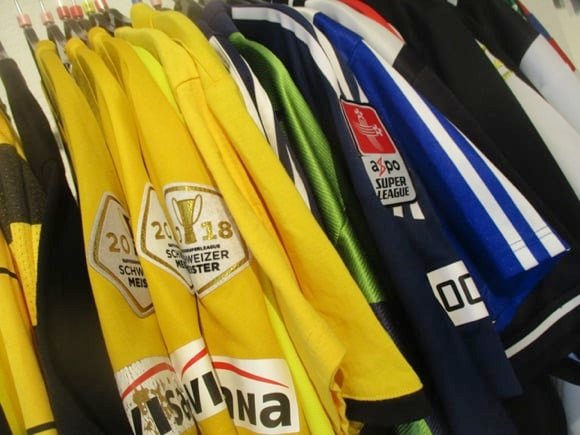
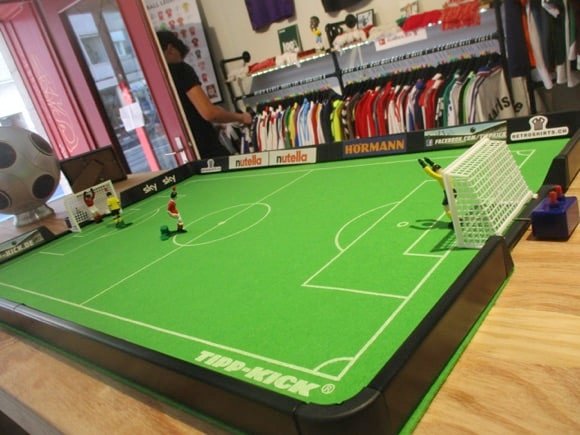
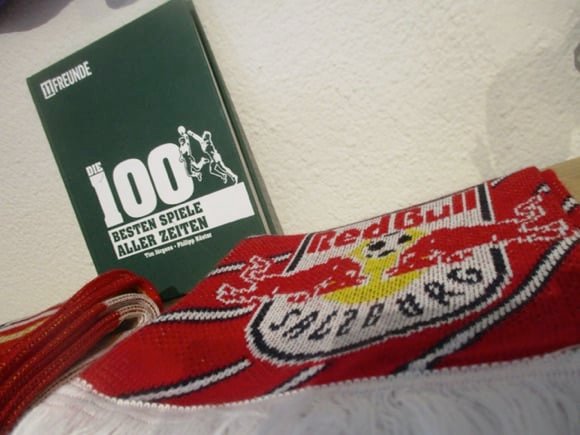
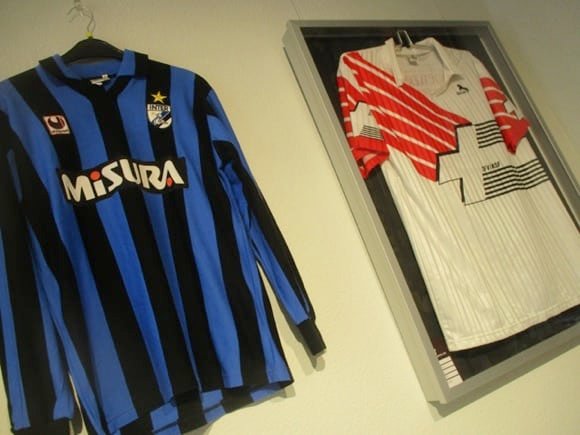
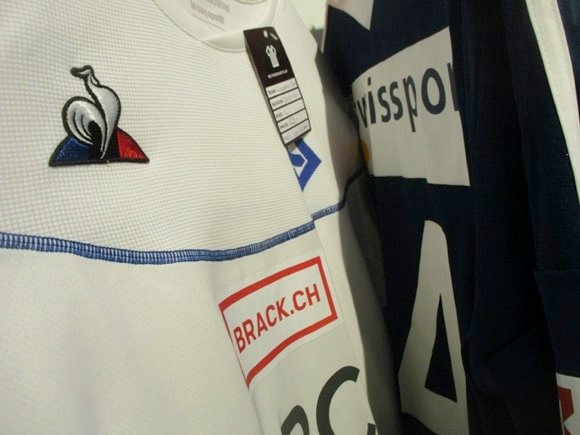
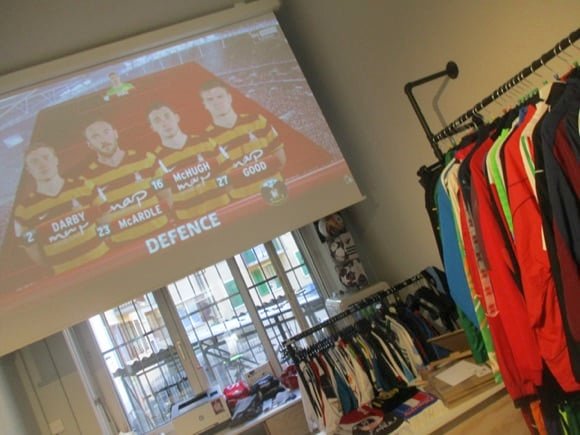
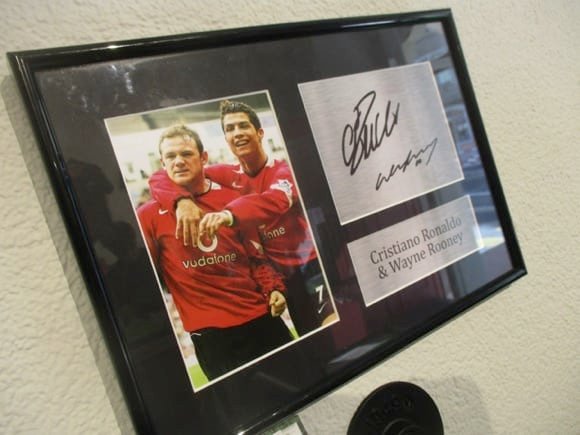
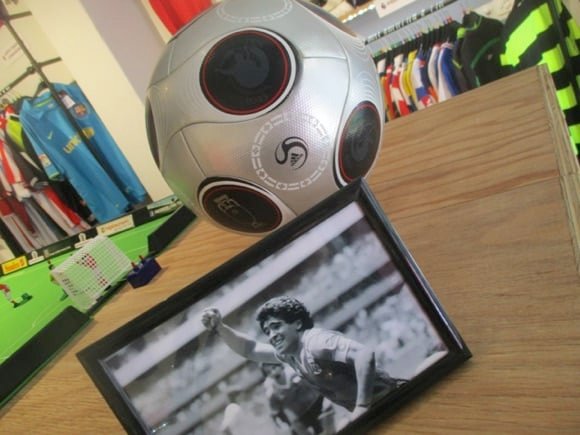
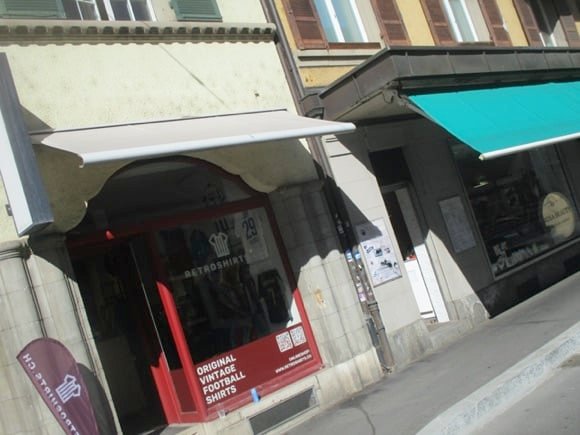
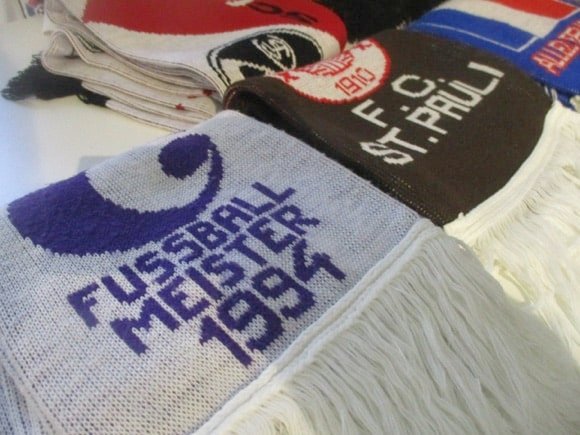
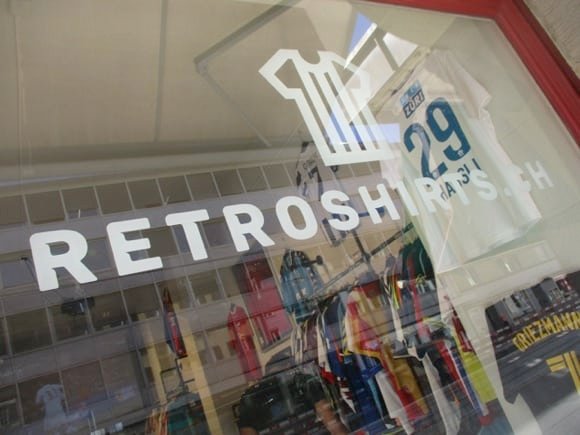
Riding tram 2 to or from the Letzigrund, keen eyes on the look-out for football feature will pick out Retroshirts (Wed & Fri noon-6.30pm, Sat noon-6pm), its green awning beckoning by the Zypressenstraße stop on Badenerstraße.
This neat if modest store has been place since March 2025, when a passionate collector decided to branch out and purvey his rare wares to the general public. At pains to stress the authenticity of what’s on offer, some of the shirts match-worn, the owner casts his net wide to ensure a colourful, global range of stock with a frequent turnover.
A quick peek into the catalogue (not all is on display) reveals gems such as an Italy top from Italia 90, a Jamaica one from 1998 and an England one Euro 96. Those who trade in such items should write in to the store through the German-only website.
For the passing fan, there are also scarves, books and other memorabilia, with an accent on the Swiss and German game. Note that for the Women’s Euros, new opening hours are being extended to Wed-Fri 2pm-8pm, Sat noon-7pm.
What to see
The best football attractions in town
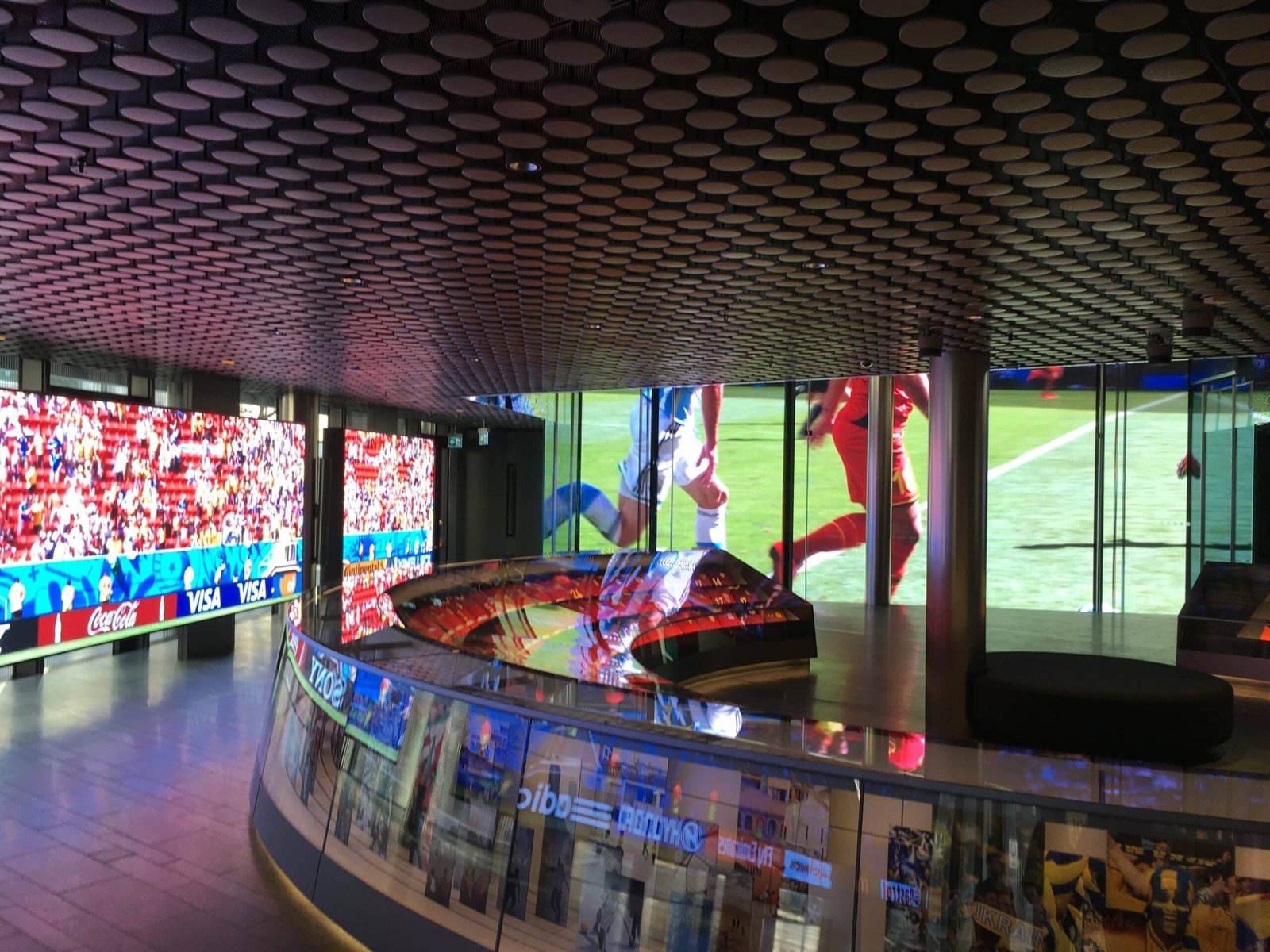
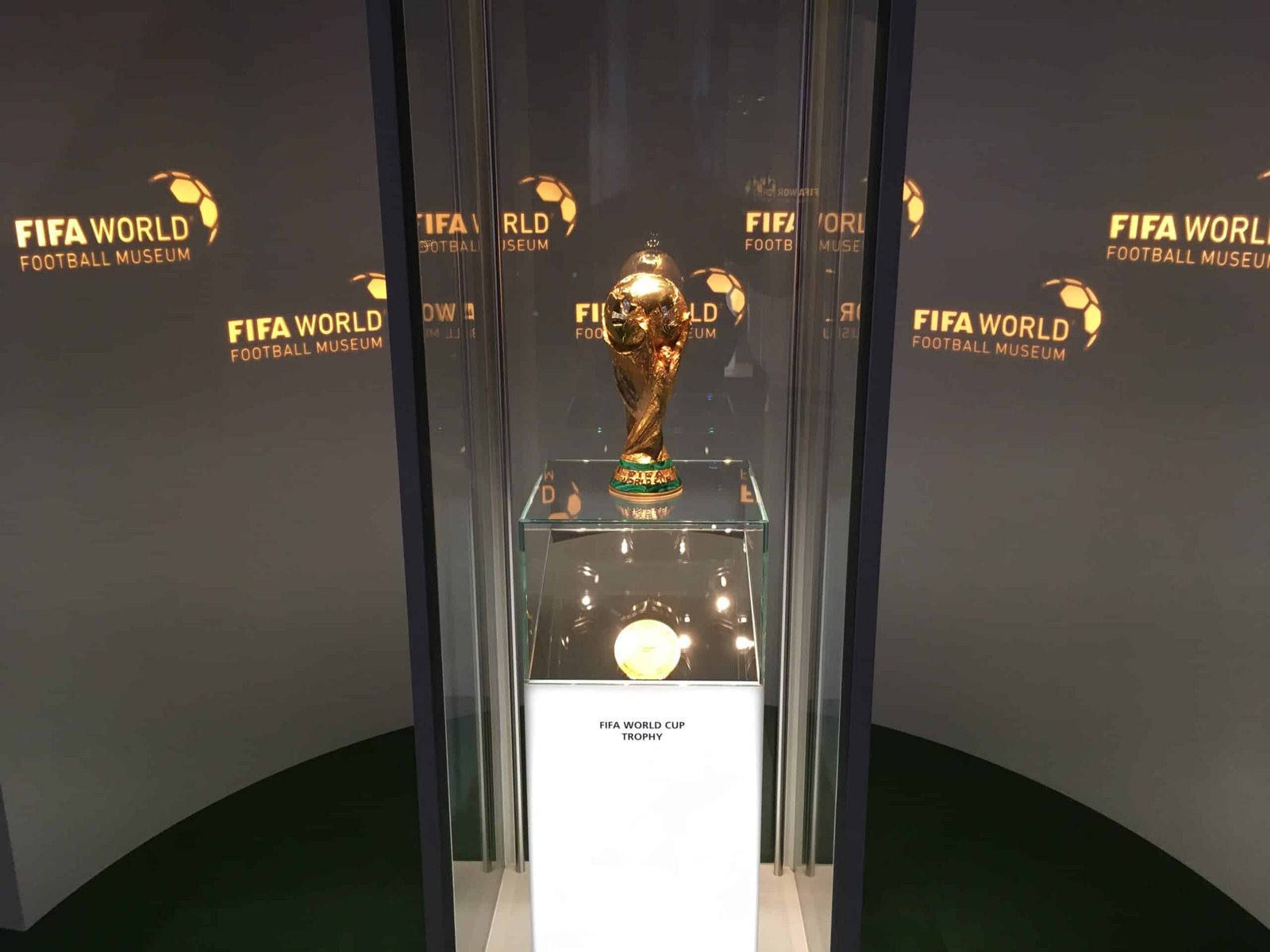

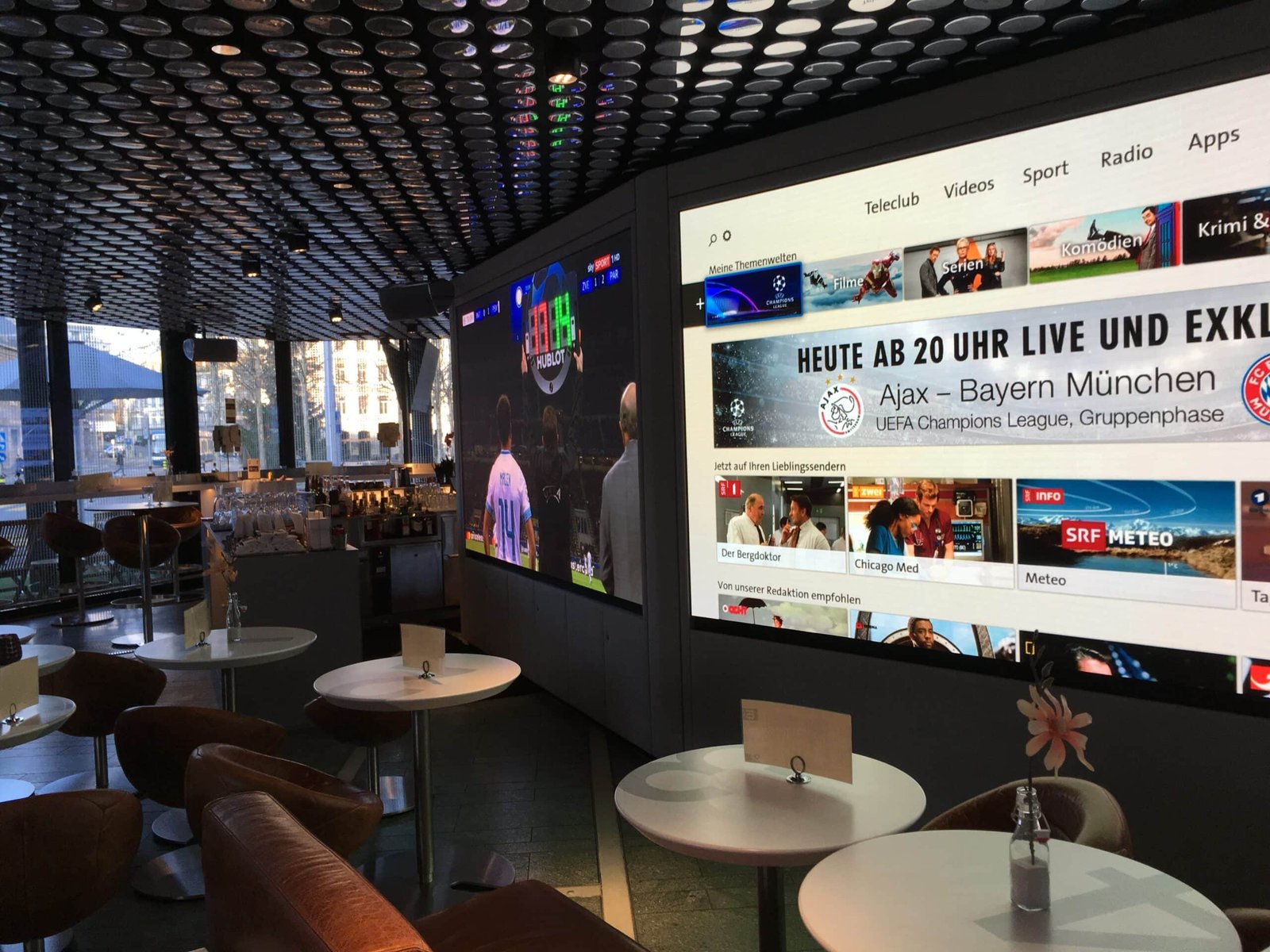
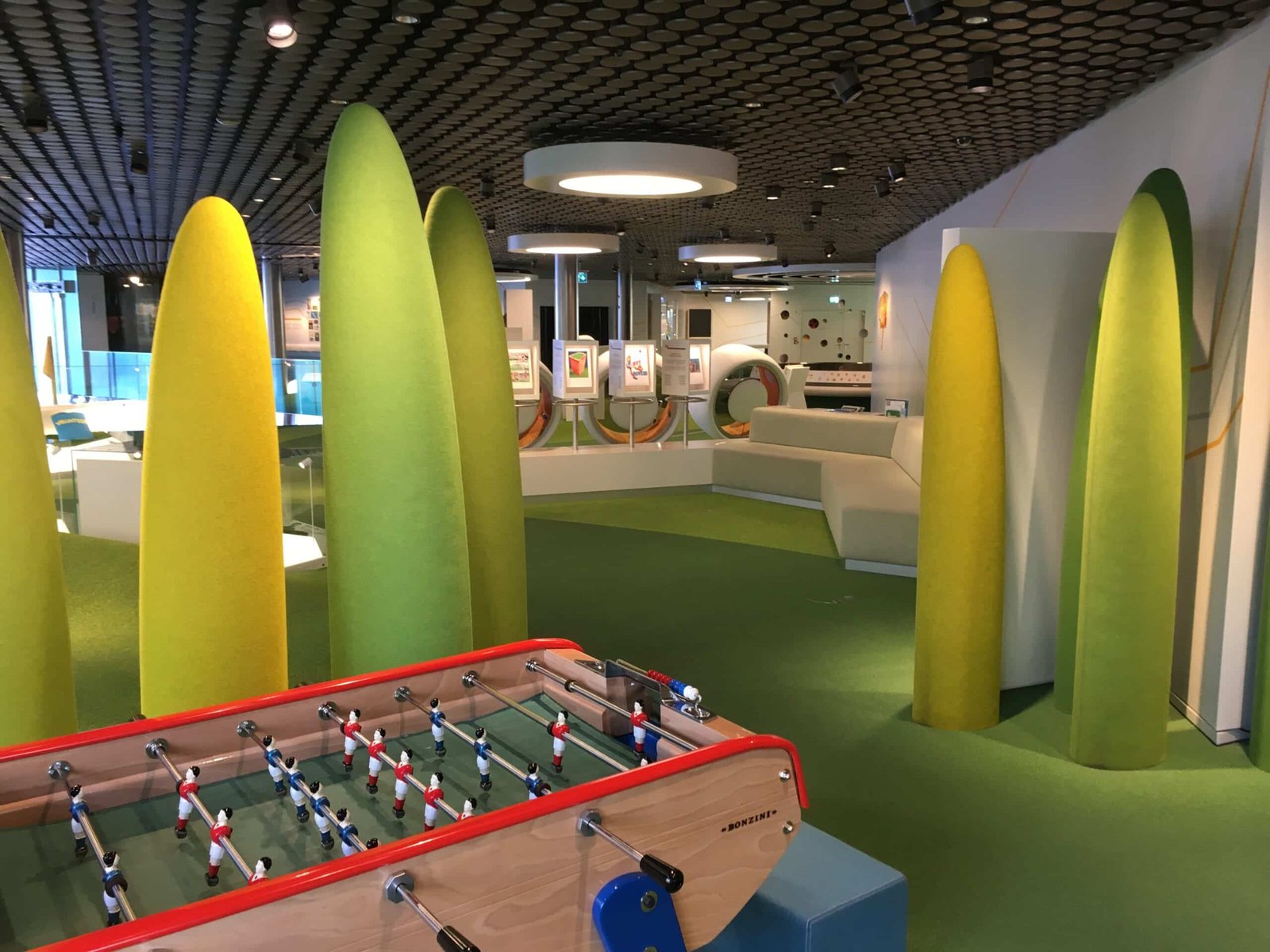

Since 1932, FIFA has been based in Zürich. In 2007, a new, glass-fronted headquarters was unveiled, most of the complex actually set underground. Surrounded by a themed garden, off-limits to the public, and sports pitches, the HQ contains a meditation room and time capsule containing bags of earth from all 208 member countries. Apart from the lobby, until 2016 there was little else to see.
The three-floor FIFA Museum (Tue-Sun 10am-6pm, Sun 9am-6pm; SF26, SF16 7-15s, under 7s free) consists of a permanent exhibition space, one for temporary displays, the Extra Time Bistro and a gift shop. Hour-long tours (SF10/SF5) are also laid on in English (Tue 2pm-3pm, Sat 11am-noon).
On show all year round is a collage of team shirts from all 211 FIFA members, their arrangement creating the namesake Rainbow pattern, which is why the canary yellow of Vanuatu sits near Brazil’s – they wouldn’t meet in the alphabet or FIFA rankings. Look out, too, for an original Uruguay shirt from the 1930 final in the World Cup gallery.
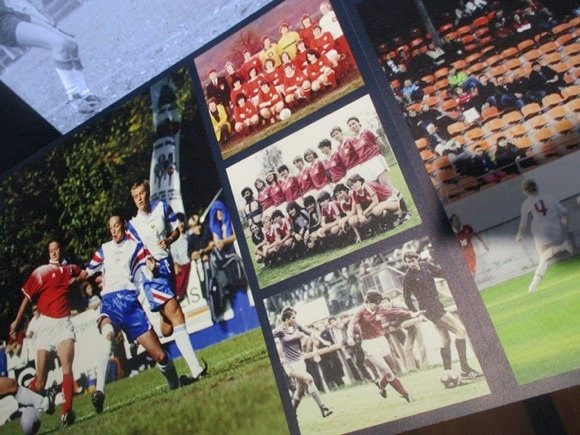
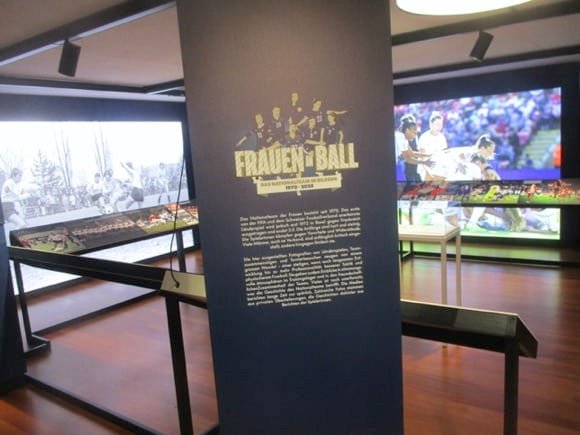
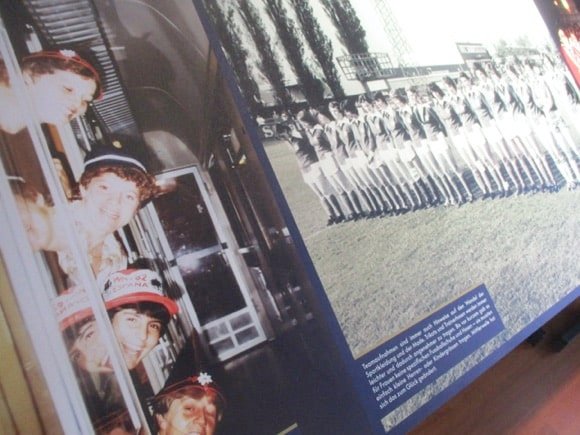
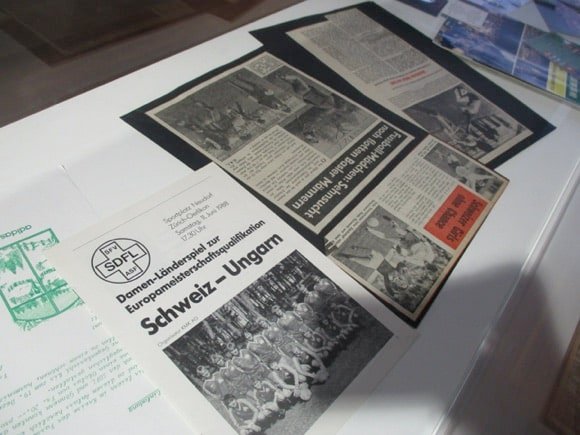
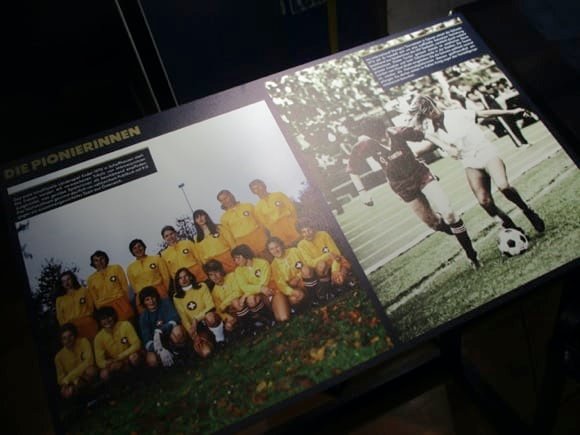

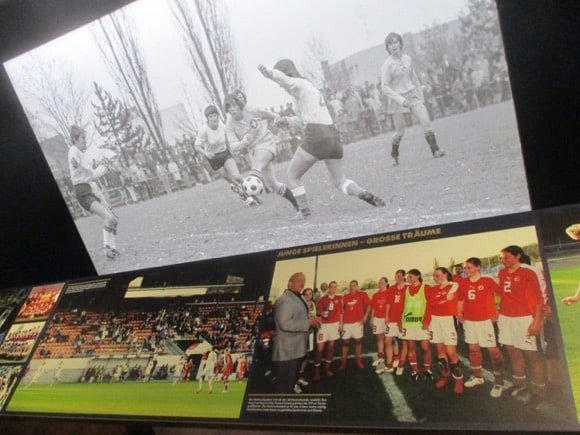
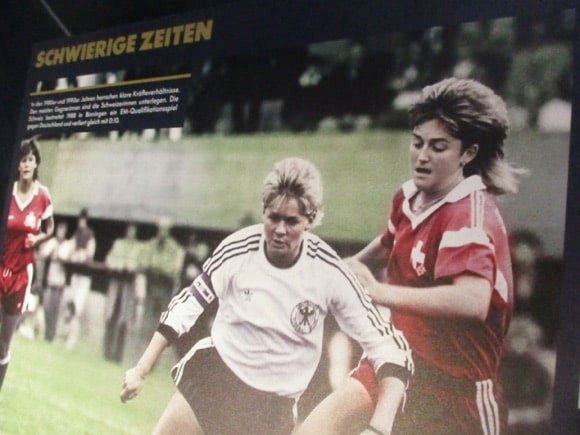
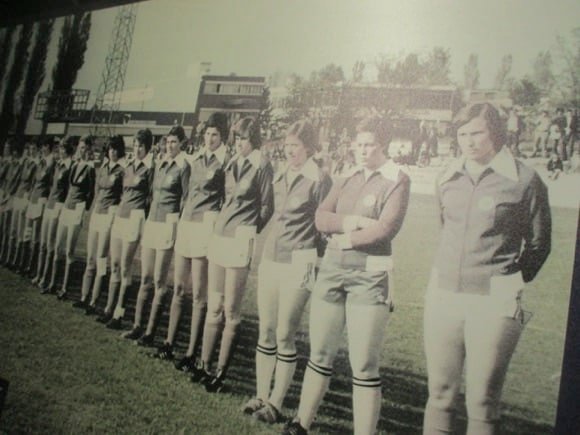
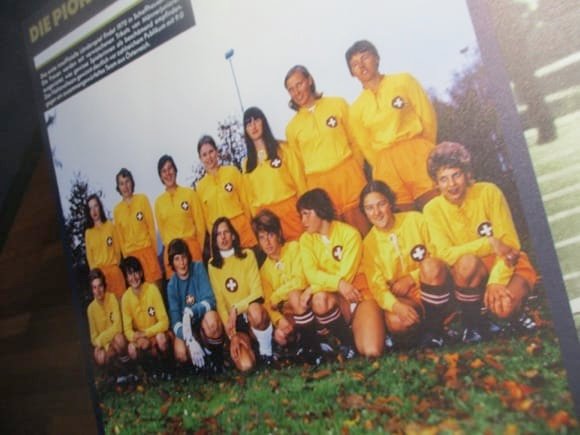

For the summer of 2025, all Women’s Euros games are being shown live, accompanying the special exhibition on the history of women’s football in Switzerland, Here to Play. There’s also a virtual screening of the first Women’s World Cup in China in 1991, for which games ran for only 80 minutes. It is safe to say that host city Guangzhou has changed a bit since then.
To reach FIFA, take a tram, train or S-Bahn to Zürich Enge – FIFA is just across Seestraße from the stop or station.
For those in Zürich during the Women’s Euros, the FC Zürich Museum (Mon-Fri 10am-6.30pm, Sat 10am-5pm) in town near the main station at Freischützgasse 1 is sharing its expansive basement exhibition space with Frauen am Ball, a pictorial history of the Swiss women’s national football team from 1970 onwards.
As well as match action and team line-ups, images include players mocking up a scene from Some Like It Hot as they travel to an away fixture, as well as backdrops of the modest grounds where La Nati had to play. The exhibition is free to enter and on display until September 16. An English-language text is promised.

